Adler Skywatch: December 2025
Header Image: A dark, star-filled sky above a snowy, forested landscape.
A full supermoon, a solstice, and not just one but two meteor showers are among the sky highlights for this month, December 2025.
The Last Supermoon Of 2025
Like the last two full Moons, December’s full Moon is considered a supermoon! It occurs when the full Moon is near its closest point to Earth in its orbit—also known as its perigee. This month, it falls on December 4, when the Moon and Earth will be roughly 222,000 miles apart.
December 2025 Meteor Showers
The Geminid Meteor Shower

The annual Geminid meteor shower is considered one of the strongest meteor showers of the year. In 2025, it’s forecasted to peak on the night of December 13 and into the morning darkness of December 14. The waning crescent Moon shouldn’t cause too much viewing interference since it doesn’t rise until after 2:00 am CT on December 14, and it will be on the opposite side of the sky from the meteors’ radiant point in the constellation Gemini.
At its peak, nearly 100 meteors per hour may be visible under perfect viewing conditions. It must be very dark, with no extraneous light; and skies must be very clear. Under light-polluted skies, expect to see maybe a quarter to a third of that amount, at best. Be sure to bundle up—looking for meteors takes time and patience, especially in the middle of a cold night.
The Ursids Meteor Shower
The Ursids meteor shower is forecasted to peak the night of December 21 through morning of December 22. While it doesn’t boast as many meteors as the Geminid shower, this year the Ursids occur near the time of the new Moon, giving you a better chance to see meteors under the dark, Moonless sky.
Five to ten Ursids per hour are expected under dark skies at the shower’s peak, though occasional outbursts during this shower have resulted in counts of around 25 meteors per hour. Again, only about a quarter can be expected in light-polluted areas.
The Winter Solstice
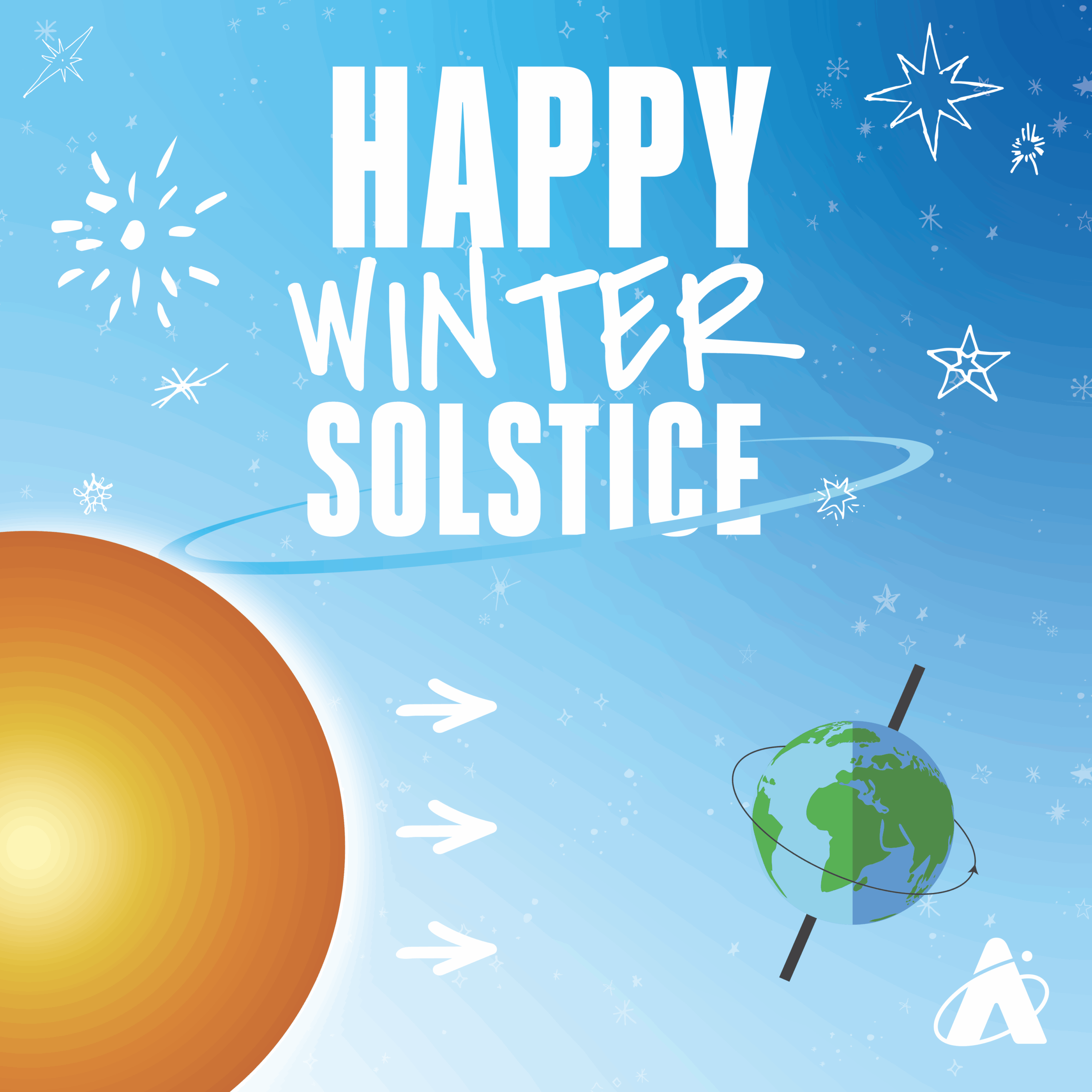
The winter solstice for 2025 occurs on December 21 at 9:03 am, marking the start of the winter season. On this day, the Earth’s North Pole is pointed furthest away from the Sun. In the Northern Hemisphere, this day experiences the least amount of daylight and longest period of darkness for the year. Since the South Pole is pointed closest toward the Sun at this time, the summer season begins in the Southern Hemisphere.
What Planets Are Visible This Month?
How To See Saturn
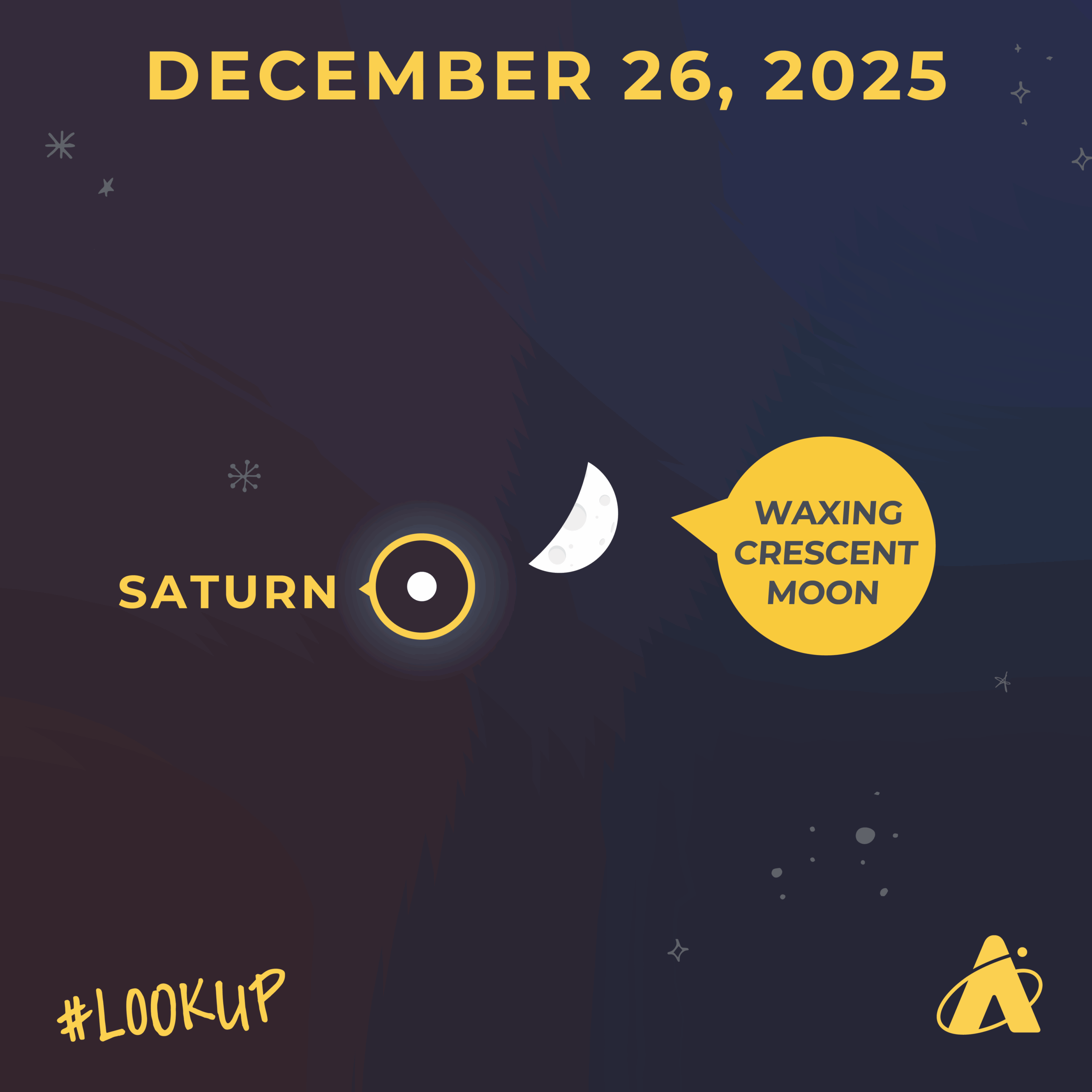
Around the end of evening twilight this month, look about halfway between the southern horizon and the zenith—or the point in the sky directly above you—to spot the planet Saturn. It’s slightly dimmer than first-magnitude in December. The night of December 26, Saturn appears near the lower “horn” of a waxing crescent Moon. Saturn sets in the west around 1:00 am at the start of the month and around 11:00 pm by the end of the month.
How To See Jupiter
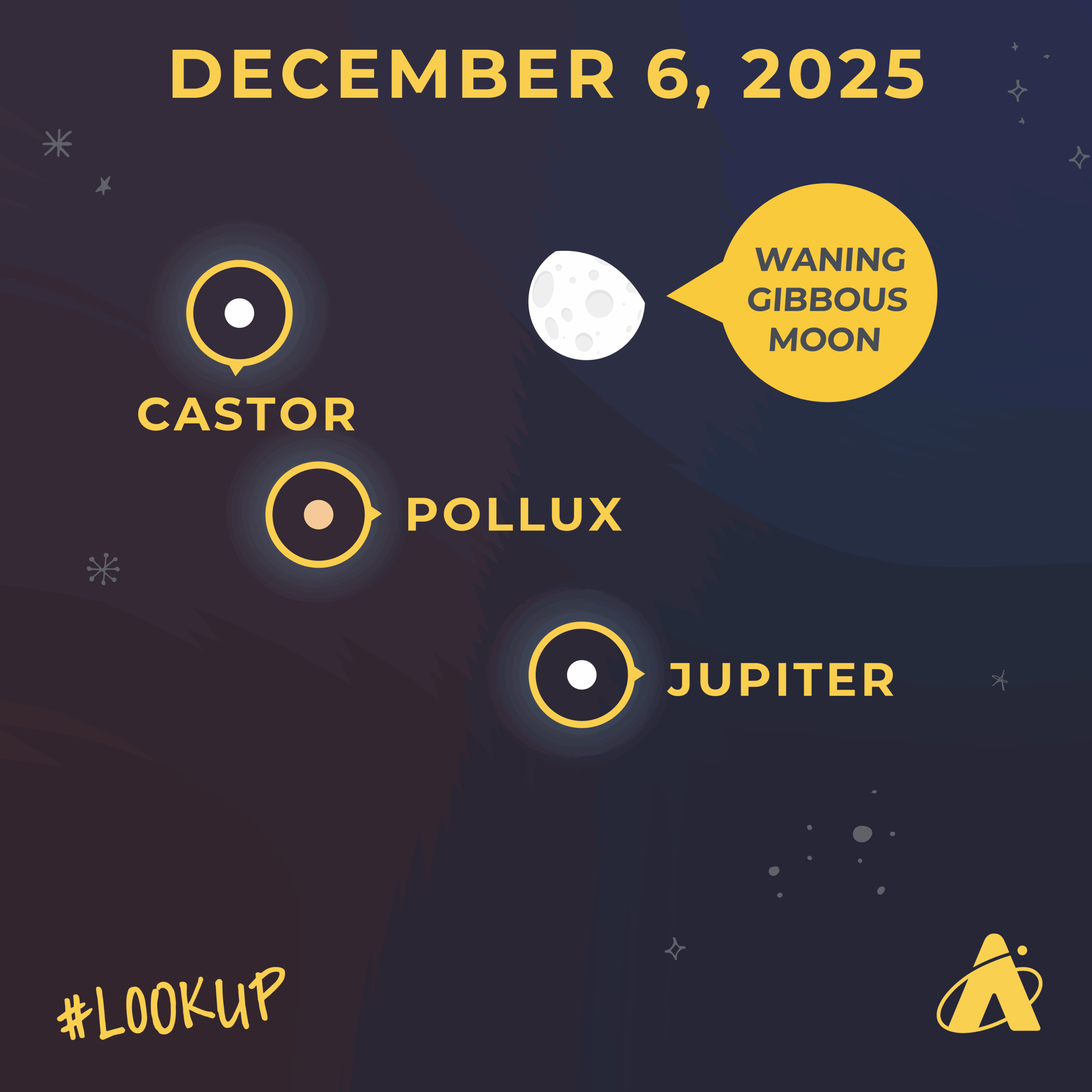
The bright planet Jupiter rises in the east-northeast around 7:30 pm on December 1, and shortly after 5:00 pm on December 31. It shines brighter than -2.5 magnitude this month. Like last month, it gets a little brighter each night. Also like last month, it appears near the “twin stars” of the constellation Gemini, Pollux and Castor. The night of December 6 through morning darkness of December 7, a waning gibbous Moon appears near Pollux, Castor, and Jupiter.
Jupiter reaches its highest point in the sky—about 70 degrees above the horizon—around 3:00 am at the beginning of the month, around 2:00 am in the middle of the month, and around 1:00 am by month’s end. At the beginning of December, it starts to fade into dawn’s light when it’s around halfway up from the western horizon. But later in the month, dawn arrives later, so it will get very close to the west-northwest horizon before the rising Sun blots it out.
How To See Mercury, Venus, And Mars
In the first half of December, about 45 minutes before sunrise, the planet Mercury may be visible rising in the east-southeast. Look about ten degrees above the horizon for the planet. However, you won’t get much time to look before the sky becomes too light. By December 16 or 17, Mercury will be too close to the Sun to be safely viewed.
Additionally, Venus and Mars appear too close to the Sun and will not be visible in December.
Moon Phases
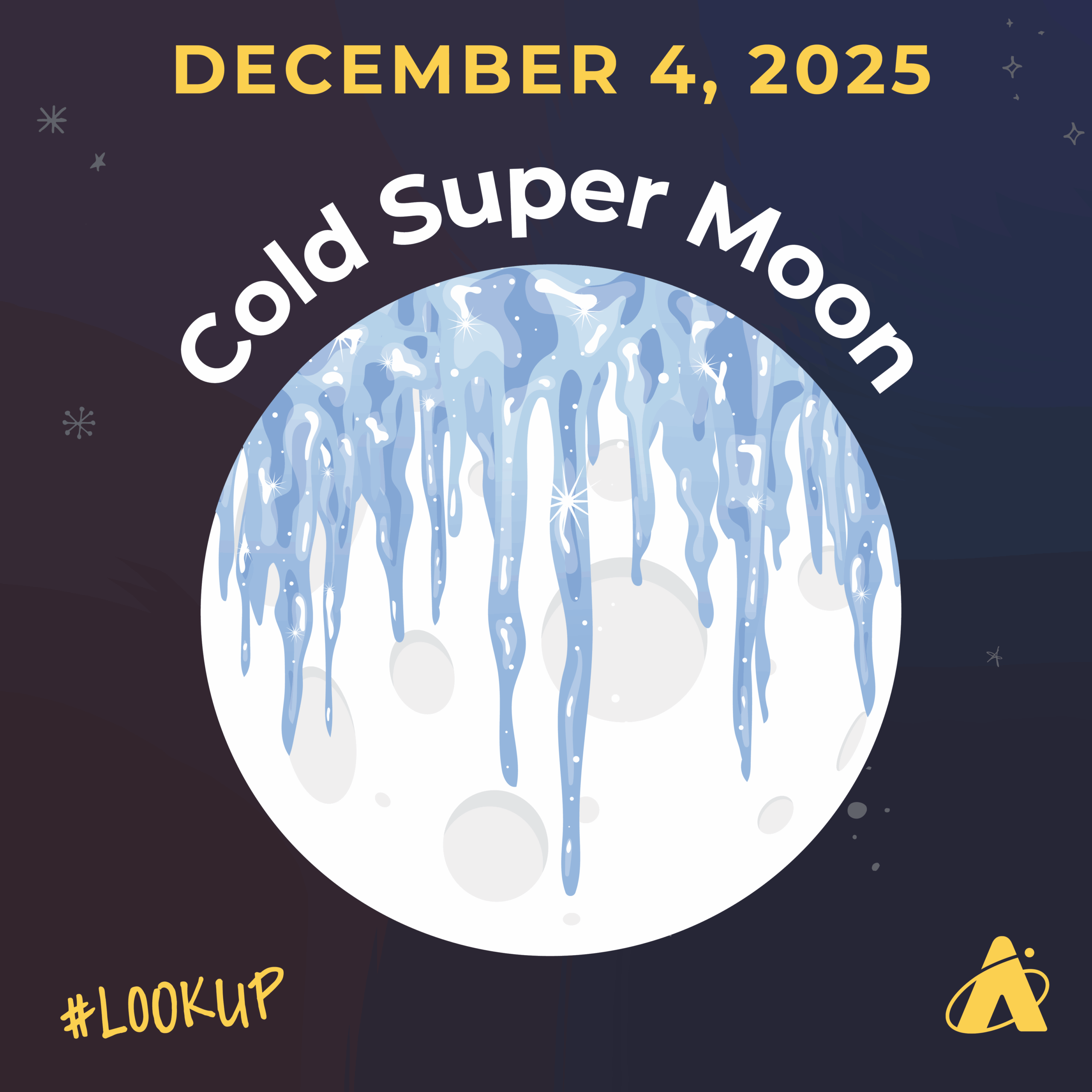
Full Moon: December 4
Last Quarter Moon: December 11
New Moon: December 19
First Quarter Moon: December 27
Please note: these descriptions are for the Chicago area, using Central time.
Subscribe To Skywatch Wednesday This December
Tour the sky with the Adler Planetarium’s Theaters Manager, Nick, in Skywatch Wednesday. Nick uses cutting-edge visualizations, NASA images, and astrophotography to show you what you can see in the night sky throughout the year.
Check out Nick’s latest episode to guide you through the autumn night sky. Learn how to see famous fall constellations like Pegasus, Cassiopeia, Cepheus, Andromeda, and Perseus. Nick also explains how to see the Pleiades star cluster, zodiac constellations Sagittarius and Taurus, Saturn with and without its rings, and Moon conjunctions!
Learn From Our Astronomy Educators
Watch recaps of Sky Observers Hangout livestreams this December! Learn how to observe upcoming cosmic happenings, enhance your astrophotography skills, and see celestial objects through a telescope virtually with our astronomy educators.
In their latest episode, Michelle and Hunter guide you through a tour of the zodiac constellations. Explore the historical connections between astronomy and astrology, learn what signs of the zodiac you can see in the sky this winter, and observe some of the wonders found hiding within these famous constellations.
Our Skies Are Full Of Holiday Lights: Winter Activities At The Adler
Image Caption: ‘Tis the season to visit the Adler Planetarium.
Longer nights lead to more stargazing and a season full of special holiday cheer throughout the Adler Planetarium.
Starting Friday, November 28, through Sunday, January 4, the Adler will offer a variety of holiday offerings, including sky shows, hands-on in-museum activities, and holiday-themed, self-guided experiences perfect for everyone in the family to enjoy! Let’s dig into what you can expect this holiday season.
New Immersive Dome Theater Shows
New to public audiences this season, and popular with school groups, is our newest sky show offering Big Astronomy. This immersive dome theater show shares the story of the people and places who make big astronomy and big science happen. Visit the extreme sites where astronomy happens in the most extreme environments and with some of the most interesting people.
The best way to kick off the new year? Pink Floyd’s The Dark Side of the Moon will be available at the Adler starting on Thursday, January 1, 2026. “The Dark Side Of The Moon” takes guests on a visual journey through space against the backdrop of one of the best-selling albums of all time, in partnership with the International Planetarium Society (IPS). Show times are coming soon!
Filling The Adler With Starlight
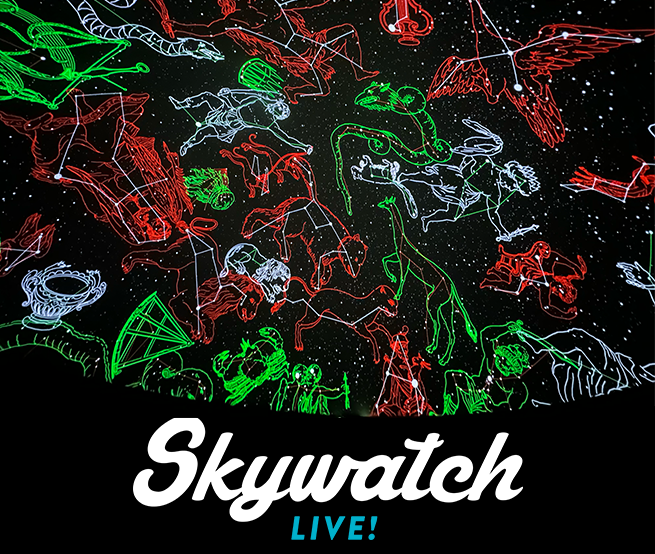
Our fan favorite, Skywatch Live, will have a holiday spin. Think of it as our version of a light festival as we turn down the city lights and turn up the sparkling stars and constellations that make up the magnificent winter night sky above the city of Chicago.
Learn all about stars, constellations, and even the Moon, along with the chance to create your very own constellations after the show! Check out available showtimes.
Guided Tours Of Our Newest Exhibit: Stars Aligned
Discover the intertwined history of astronomy and astrology in our newest exhibition, Stars Aligned: Tracing the Story of Astronomy & Astrology.

On this 20-minute live tour, Adler educators highlight the tools, texts, and traditions that reveal how people once used the night sky to better understand time, health, and daily life in the early modern period. Join us for guided tours Tuesday–Sunday starting November 28, 2025, and Wednesday nights beginning December 3, 2025.
Holiday Crafts You Can Take Home
Stop by our Star Studio this holiday season to create your own constellation card! Learn more about winter star formations, trace your favorites using stencils, and add a touch of sparkle. Take it home to use as a festive gift tag or holiday greeting card!
Activities will run Tuesday–Sunday from 10:00 am–2:00 pm and Wednesdays from 4:00 pm–8:00 pm starting November 28, 2025.
Touch History: Interactive Collection Objects
Transport yourself back in time in the Stargazers Hub. Learn about the methods and tools used to look to the skies for centuries, including special hands-on experiences that relate to our newest exhibition: Stars Aligned: Tracing the Story of Astrology and Astronomy.
Guests will learn more about our Giant Armillary Sphere and discover star-studded teaching collection objects from our Cabinet of Curiosity. Activities will run Tuesdays–Sundays from 10:00 am–2:00 pm and Wednesdays from 4:00 pm–8:00 pm in Stargazers Hub starting November 28, 2025.
Join Us This Holiday Season—Get Tickets
Winter is a special time at the Adler Planetarium. Every holiday season, we expand our public museum days and hours, giving you and your family more time to explore what’s new at the Adler.
Learn more about our expanded holiday hours, explore all of our immersive dome theater shows, and get a list of all of our limited-time holiday offerings.
Tickets for your next space adventure are on sale now!
10 Things At The Adler Planetarium You Don’t Want To Miss
Header Image: A snowy day at the Adler Planetarium.
Editor’s Note: Updated to reflect more current and updated exhibit information.
May your holidays shine bright, along with your favorite winter constellations. As the first planetarium in the Western Hemisphere (and one of the historic Chicago attractions located on the city’s Museum Campus), we’ve got some pretty stellar exhibits you don’t want to miss during your visit!
For a list of fun things to do in Chicago this winter, read on to check these experiences off your Chicago bucket list. You’ll even learn some behind-the-scenes tidbits along the way.
#1: Our Dome Theater Sky Shows
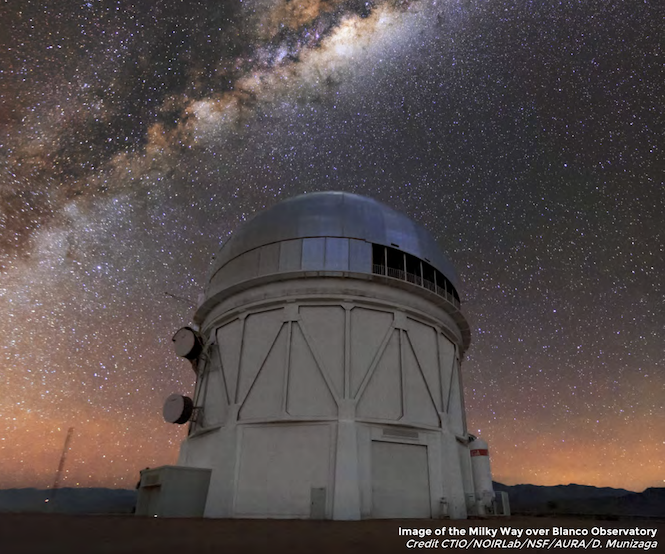
One of the coolest things about the Adler Planetarium is that we have not one, but two dome theaters!
Fun fact: We were also the first planetarium in Chicago to open a dome theater back in the day.
When you step inside a planetarium dome theater and take a seat, you become immersed in spectacular space visualizations that transport you across time and space.
What’s Currently Playing at the Adler:
- Big Astronomy: Discover Chile’s grand observatories and meet the people who push the limits of technology and what we know about the universe using world-class telescopes.
- Niyah And The Multiverse: Join young Niyah, her grown-up self, and her friends on an Afrofuturist journey through multiverse theory! Learn about shadow matter, bubble universes, many worlds, and the connections between science and culture.
- Cosmic Rhythms: Featuring Adler astronomer’s expertise, breathtaking imagery, and bold choreography by Joffrey Ballet dancer Xavier Nuñez, Cosmic Rhythms takes audiences on a mesmerizing journey through the cosmos.
- Destination Solar System: It’s 2096, and you’ve just signed up for a trip around the solar system with Space Express Tours! Get ready to tour the hottest hot spots, and most spectacular sights in deep space—fun for space explorers of all ages.
- Imagine The Moon: Explore how the Moon—our partner in space and companion in our sky—has inspired human creativity, learning, and exploration ever since looking up.
- Skywatch Live: See Chicago’s magnificent night sky simulated without light pollution. Our live presenters will show you constellations, stars, the Moon, and more as seen above the city on the day of your visit—perfect for stargazing enthusiasts!
- One World, One Sky: Blast off in an imaginary rocket with Big Bird and Elmo on an unforgettable journey to the Sun, Moon, and the Big Dipper!
Buy Tickets For Your Next Space Adventure
#2: Our Newest Exhibit, Stars Aligned

Here in the 21st century, the words astrologer and astronomer mean very different things. But in the early modern period (1500–1800), you could get accurate information about the next lunar eclipse from an astrologer or have your horoscope cast by Galileo himself.
What do astrology and astronomy have in common? What did the world look like when observing the sky and interpreting its meaning were one and the same? Step back in time in our newest exhibition, Stars Aligned: Tracing the Story of Astronomy and Astrology, to discover how these two practices were once intertwined.
#3: Say Cheese and Take A Selfie

There are eight different Selfie Spots around the museum—can you find them all?
Throughout the museum you can find stickers labeled “Selfie Spots.” Take a selfie with our inflatable Moon near the Cosmic Cafe, on a light pollution map of Chicago in Chicago’s Night Sky or with the JWST mirrors in Stargazers Hub. When exploring Other Worlds, there are a couple of awesome selfie spots where you can take pictures with large models of Saturn, Jupiter, Neptune, or Uranus hanging from the ceiling, a climbable gas giant ringed exoplanet, and a real meteorite from the Arizona desert.
#4 Astronomical Objects Everywhere
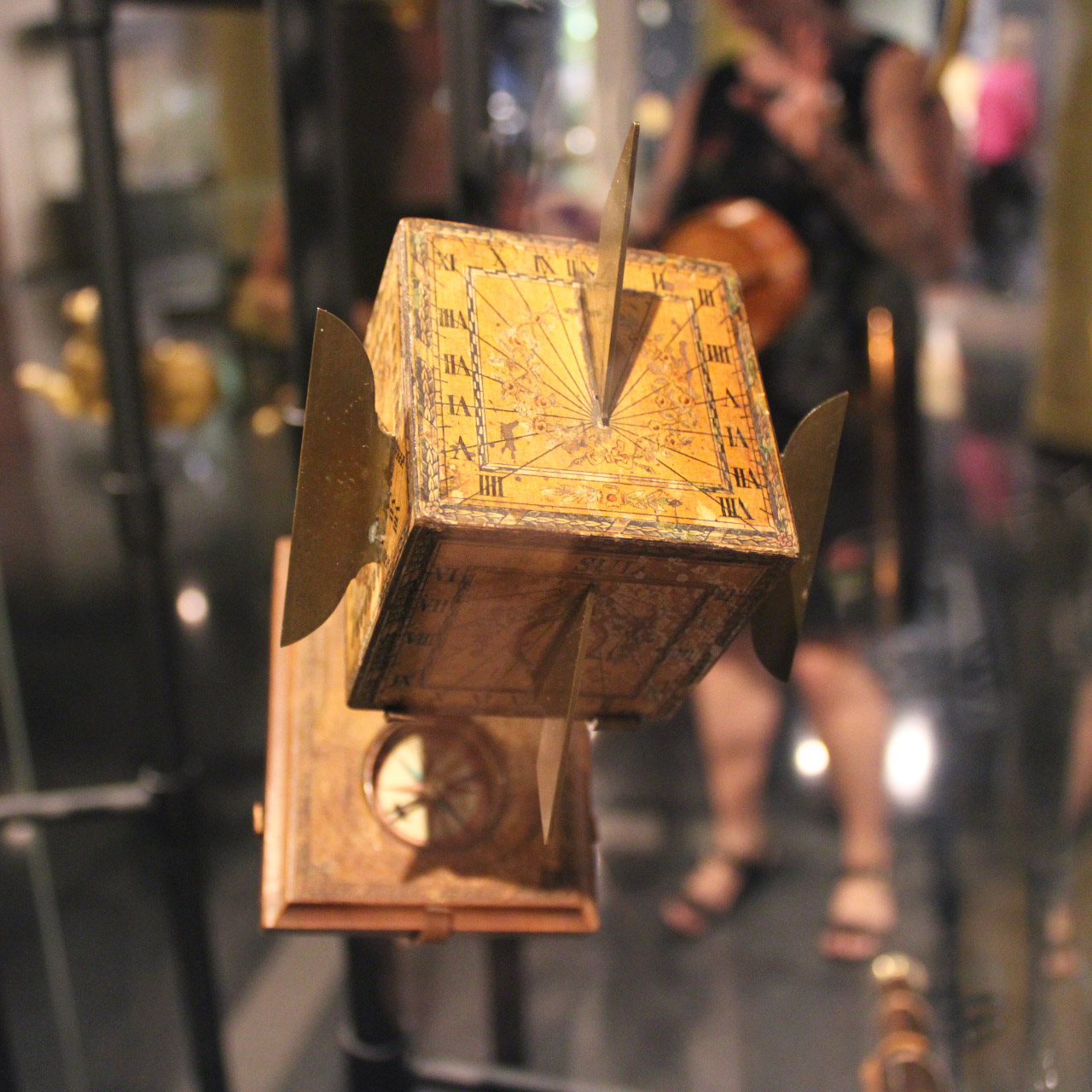
The Adler has the best and most comprehensive sundial collection in all of North America, but we also have a ton of other collections objects too! You can learn about different cultures through these objects like astrolabes and celestial globes on display.
For a limited time, experience Stargazers Hub unlocked, from November 28—December 31 from Tuesday—Sunday between 10:00 am–2:00 pm and 4:00 pm–8:00 pm on Wednesday night. Take a step into the gallery to see the tools used to look at the skies for centuries for special hands-on experiences that relate to our newest exhibition: Stars Aligned: Tracing the Story of Astrology and Astronomy.
This hands-on experience gives you a close look our seven-foot armillary sphere and the tools people have used to map the stars throughout history in our Cabinet of Curiosity.
#5: The Doane Observatory

Did you know the Doane Observatory is home to the largest publicly accessible telescope in Chicago? Since opening in 1977, the observatory in Chicago has had several telescopes within its walls, and these telescopes have given Chicagoans the opportunity to look up at the Sun, the Moon, stars, nebulae and planets despite light pollution’s interference in the city.
The Doane is open (weather permitting) on Wednesdays during Adler at Nights throughout the year. To know when the Doane will be open, join our Facebook Group or check our Doane Observatory page the week of your visit. You can also check in at the box office on the evening of your visit to inquire about the availability of the Observatory.
#6: The Telescope Terrace

When skies are clear and the weather is nice, our public observing educators and telescope volunteers will be out on the terrace with small ‘scopes for daytime observing fun.
The telescope terrace is located to the right of the Accessible Entrance of the Adler Planetarium!
#7: An Out-Of-This-World Stomp Rocket

Located in our Mission Moon exhibit, there is an interactive stomp rocket where you can build your own foam rocket and try to send it up as high as you possibly can through the atmosphere (aka a very large tube)!
Learn how you can make your own stomp rocket at home.
#8: Architectural Secrets

In 1930—the year the Adler Planetarium opened—Italian-American sculptor Alfonso Iannelli built and installed a dedication plaque in what is known as our Rainbow Lobby. To get into the museum, you walk up the front steps and pass through this lobby! Why is it called the Rainbow Lobby you ask? Around sunset every single day, the Sun’s rays pass through our glass angled prism-like front doors causing the light to bend and the colors in the Sun’s light to spread out, creating lots of tiny rainbows!
Fun fact: The Rainbow Lobby’s dedication plaque is not the only sculpture around the building created by Alfonso Iannelli. Outside and inside the Planetarium are 12 zodiac constellation plaques that match the Rainbow Lobby’s plaques that depict the planets.
#9: Spaces For Collaboration, Curiosity, and Holiday Crafts
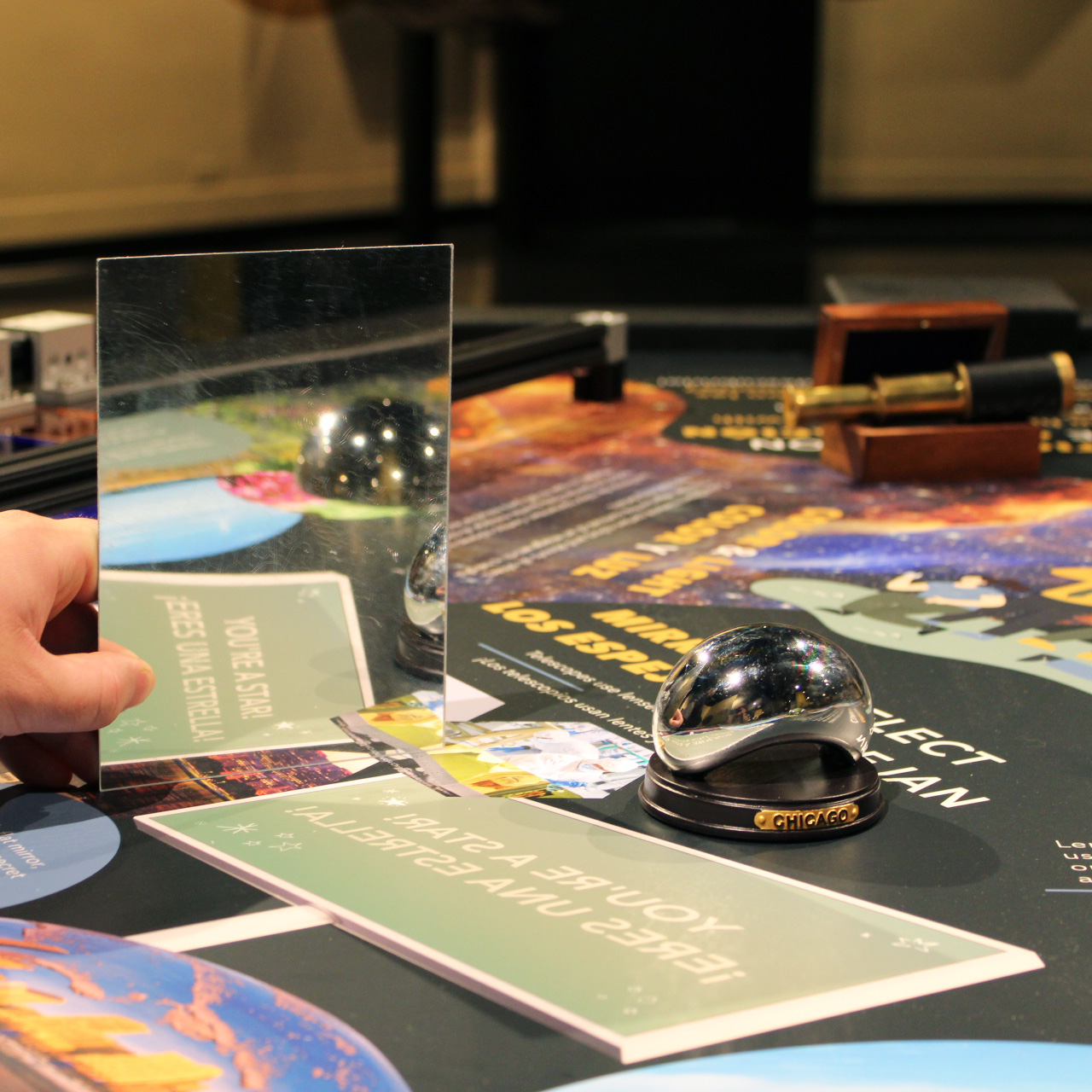
Around the planetarium are several Community Design Labs that are flexible spaces for guests to learn through play, test ideas, create art, and reflect.
- Located in the Telescopes: Through The Looking Glass exhibit, the brand new Community Stargazers Hub offers a multiversity journey through time with a focus on historic objects and is great for all ages.
- The Community PlayLab is located in the Planet Explorers exhibit and is great for children six and under and their families.
- The Community Star Studio is located in the Chicago’s Night Sky exhibit and is great for all ages!
Stop by our community art studio this holiday season to create your own constellation card! Learn more about winter star formations, trace your favorites using stencils, and add a touch of sparkle. Take it home to use as a festive gift tag or holiday greeting card!
We’ve expanded our in-museum activity hours from November 28—December 31. Join us Tuesday–Sunday from 10:00 am–2:00 pm and 4:00 pm–8:00 pm on Wednesday nights.
#10: Winter City Views

There’s lots to look at on the inside at the Adler, but what about the outside? We’ve been located on Chicago’s lakeshore for almost 93 years, and the views of the city are unbelievable!
Fun fact: There is a huge sundial out in front of the Adler. Have you seen it before?
Join Us This Holiday Season—Get Tickets
Tickets for your next space adventure are on sale now!
Adler Skywatch: November 2025
Header Image: Dark sky image of the Milky Way taken in Middle Fork River Forest Preserve. Image credit: Vinnie Lotesto
If you’ve been bothered by the late sunrises during the latter half of October, you’ll get a brief reprieve in November 2025.
Daylight Saving Time Ends
In the Chicago area, the Sun has been rising after 7:00 am since October 13. On November 1, it rises at 7:23 am. But on the very next day, November 2, the Sun rises at 6:25 am. That’s because Daylight Saving Time (DST) ends for 2025 on November 2, at 2:00 am local time. On this date, those areas that follow DST get to turn their clocks back one hour, and get an extra hour of sleep! Throughout November, the Sun will rise before 7:00 am until early December.
The return to Standard Time means our sunrises are about an hour earlier, but it also means our sunsets are earlier too. Sunrises move from after 7:00 am to after 6:00 am, and sunsets move from around 5:45 pm to just after 4:45 pm.
November’s Supermoon

Like last month’s full Moon, November’s full Moon—which rises on November 5—can be considered a supermoon. A supermoon occurs when a full Moon (or new Moon) is close to its perigee, or closest point to Earth. As a result, a supermoon may look slightly bigger and brighter than a typical full Moon. November’s is the closest supermoon of the year, being fewer than 222,000 miles from Earth.
This month’s full Moon earns the nickname the “beaver supermoon,” as this is the time of year when the large American rodents are busy finishing up their winter homes.
Planet Spotting This November
Spotting Saturn
In planetary action this month, Saturn rises in the east-southeast before sunset each day around first-magnitude in brightness. Early in the month, start looking for it low in the east-southeast during early dusk. Later in the month, try looking around the same time, but a little higher in the southeast sky.
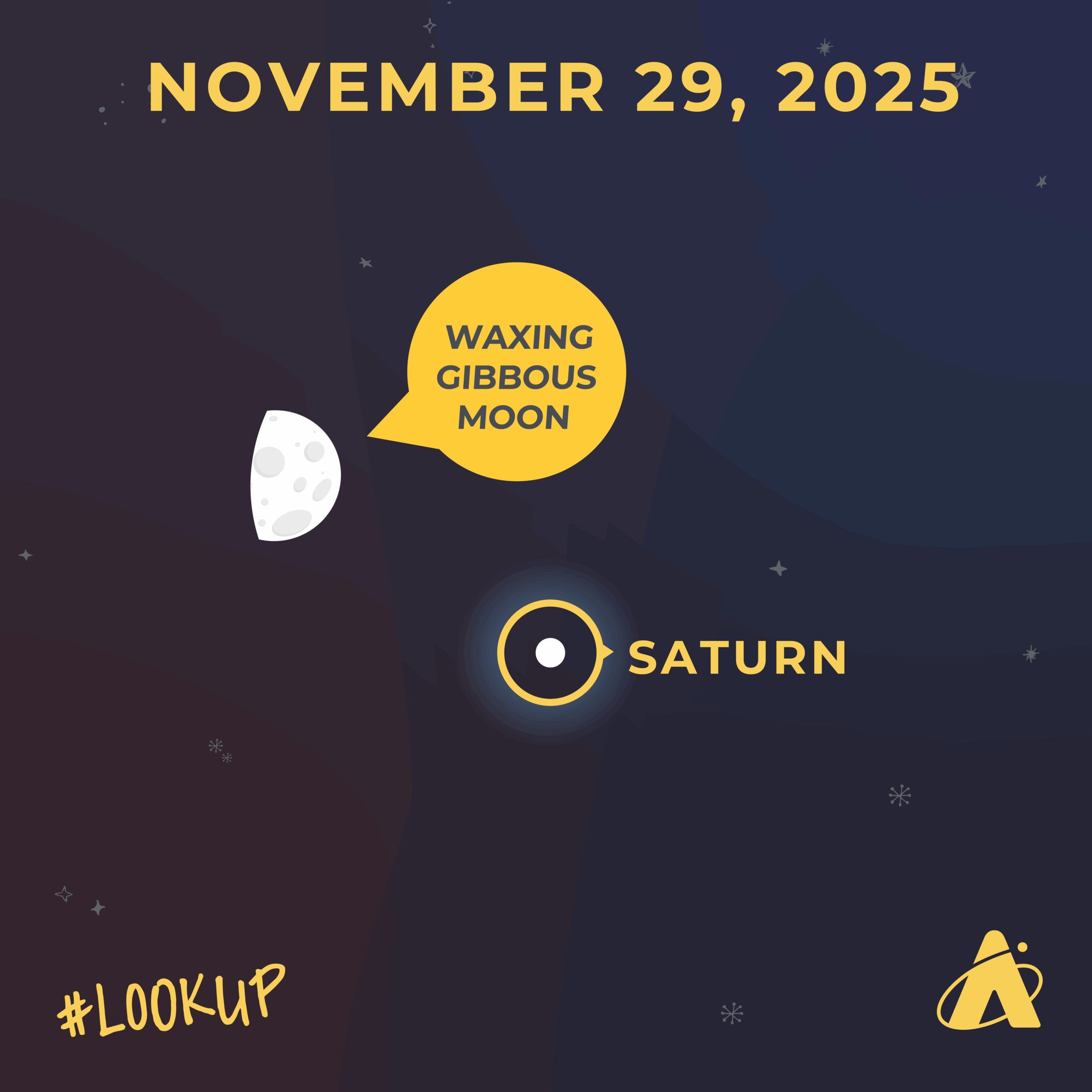
Around mid-evening, Saturn gets about 45 degrees high in the southern skies. The evening of November 29, it’s less than five degrees away from the bright side of a waxing gibbous Moon. Saturn sets in the west-southwest around 2:30 am Central time early in the month and by about 12:30 am by month’s end.
How To See Jupiter
The planet Jupiter shines brighter than -2.3 magnitude this month, and it gets a little brighter each night. It rises in the east-northeast around 9:30 pm early in the month, and around 7:30 pm by month’s end.
Like the past few months, Jupiter appears near the “twin stars” Pollux and Castor, in the constellation Gemini. The night of November 9 through the early morning darkness of November 10, a waning gibbous Moon appears between Jupiter and Pollux, making it easier to spot Jupiter.
Jupiter gets about 70 degrees high in the southern skies around 3:00 am–4:00 am. Jupiter is around 45 to 50 degrees high in the west-southwest skies when it starts to fade in the light of dawn.
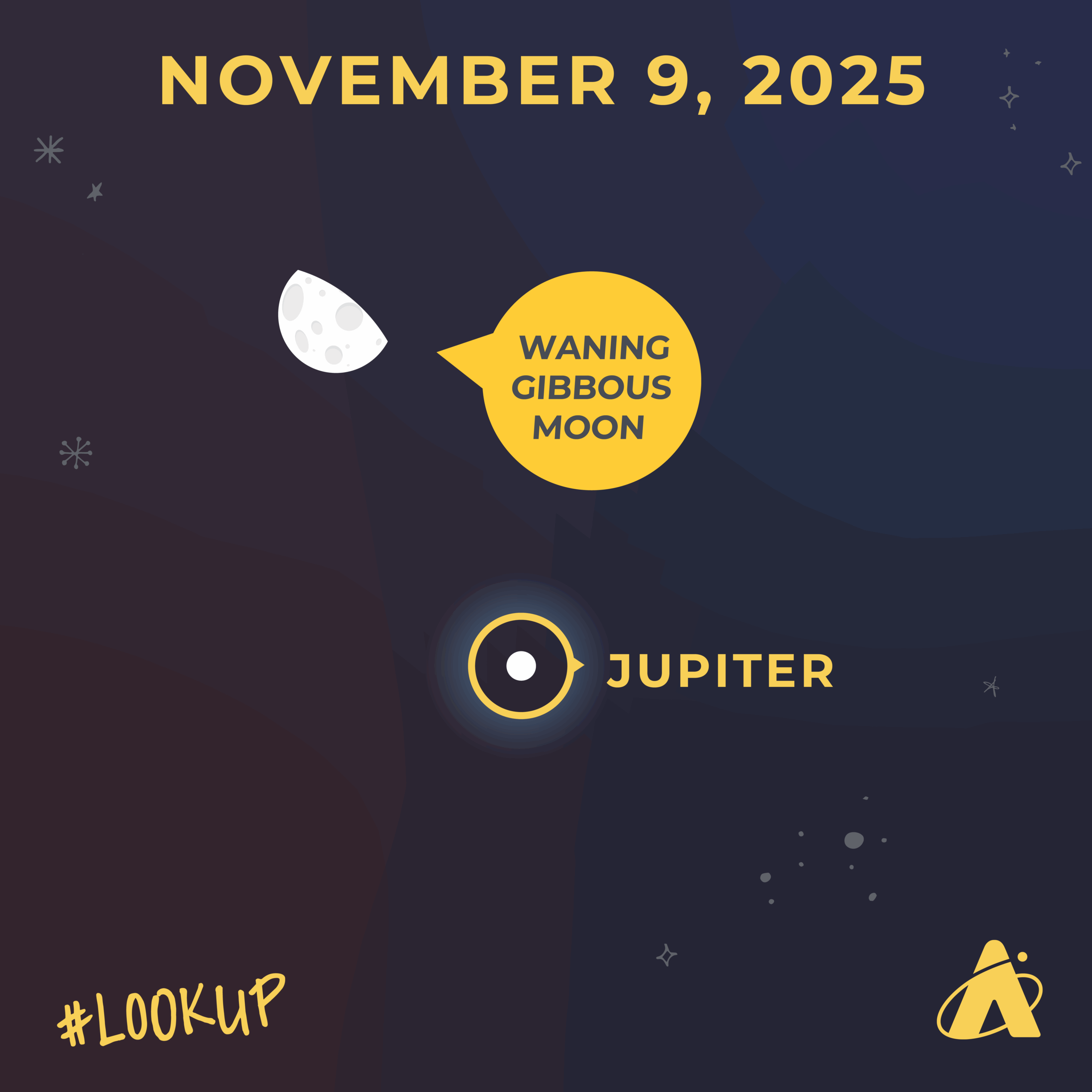
Venus In The Early Morning Sky
The brightest planet, Venus, rises in the east-southeast about one hour before the Sun throughout early November. However, the planet appears to move closer to the rising Sun each day this month. By November 13, Venus appears very low in dawn’s glare, making it difficult to spot. Due to its proximity to the Sun, viewers looking for Venus at this time run the risk of permanent eye damage.
Mercury And Mars
On the last day or two of the month, the planet Mercury rises in the east-southeast, about 90 minutes before the Sun. It’s brighter than first-magnitude and will get even brighter the first couple days of December! It’s a good time to try spotting this elusive planet.
The planet Mars appears very close to the setting Sun this month, making it difficult—if not impossible—to see.
The Leonid Meteor Shower
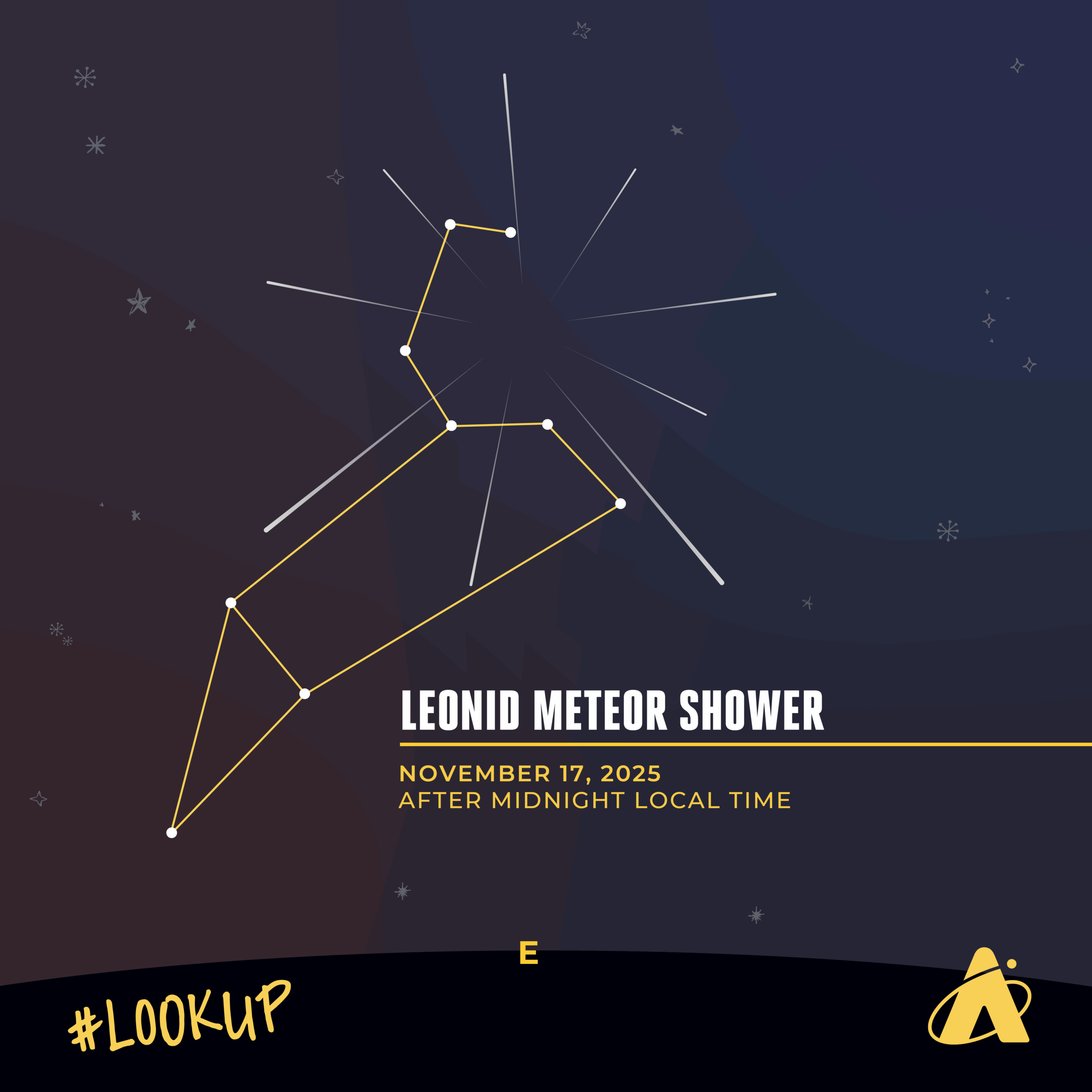
The Leonid meteor shower peaks the night of November 17 through the early morning darkness of November 18. Only around ten Leonid meteors per hour are expected in a typical year under dark skies—with even fewer seen in light-polluted areas.
However, the Leonids are historically known to have sporadic outbursts of many meteors. In rare cases in recorded history, the Leonids have turned into meteor storms, with many meteors per minute. While we don’t expect a meteor storm until around 2099, you may still want to check out this lovely medium-strength meteor shower for yourself. This year, the waning crescent Moon on November 17–18 doesn’t rise until nearly dawn, allowing a better opportunity for darker skies. The darker the sky, the better the viewing!
November 2025 Moon Phases
Full Moon: November 5
Last Quarter Moon: November 11
New Moon: November 20
First Quarter Moon: November 28
Please note: these descriptions are for the Chicago area, using Central time.
Subscribe To Skywatch Wednesday This November
Tour the sky with the Adler Planetarium’s Theaters Manager, Nick, in Skywatch Wednesday. Nick uses cutting-edge visualizations, NASA images, and astrophotography to show you what you can see in the night sky throughout the year.
Check out Nick’s latest episode to guide you through the autumn night sky. Learn how to see famous fall constellations like Pegasus, Cassiopeia, Cepheus, Andromeda, and Perseus. Nick also explains how to see the Pleiades star cluster, zodiac constellations Sagittarius and Taurus, Saturn with and without its rings, and Moon conjunctions!
Learn From Our Astronomy Educators
Watch recaps of Sky Observers Hangout livestreams this November! Learn how to observe upcoming cosmic happenings, enhance your astrophotography skills, and see celestial objects through a telescope virtually with our astronomy educators.
In the latest episode, Michelle and Hunter tell you everything you need to know about solar maximum—a period of heightened solar activity that we are currently in! Get a live view of the Sun through our telescopes and learn all about how the Sun’s activity and dynamic weather affect us here on Earth.
Adler Planetarium Announces Opening of Stars Aligned
Header Image: Astrolabium Planum, a book from 1494, features a collection of illustrations corresponding to each degree of the zodiac. Image Credit: Josh Castleberry
On Friday, October 31, the Adler Planetarium’s newest temporary exhibition called Stars Aligned: Tracing the History of Astronomy and Astrology will open to the public. Exploring the connected histories of astronomy and astrology in the early modern period (c.1500-1800), this exhibit will help you understand how people of the past made sense of the world around them.
These two disciplines were once the same practice, but over time, astronomy and astrology took different paths, though tied to a similar purpose, a longing to understand our place in the universe.
Stars Aligned: Tracing The History Of Astronomy And Astrology
Draw back the curtains and get a glimpse into the popularity and practice of astrology in the early modern period through historic instruments and books, helping you piece together how these two disciplines, once intertwined, began to shift. Astronomy, as the mathematical study and charting of celestial bodies, laid the groundwork for scientific discovery. Astrology interpreted those same movements as signs, shaping how people thought about time and fate, and how they used the stars to navigate daily life.
“One of the core missions of the Adler has always been to tell the history of astronomy, to help us understand how where we came from impacts how we study the stars today. Astrology is a crucial part of that history, and it’s so exciting to be able to unpack that story with some of our most unusual and special artifacts,” says Dr. Katie Boyce-Jacino, curator and director of collections at the Adler.
“Approaching the history of astronomy from this angle gives us access to stories and lived experiences that we might not otherwise see. It’s a very human story, of people trying to make sense of the world around them, just like we do today!”

Image Caption: This object is a Northern Indian scroll from 1769 is an astrological calendar for the year, also known as a Hindu Almanac, or Panchānga. Image Credit: Josh Castleberry
Entering the exhibit will feel like entering an astrologer’s home or place of practice from the period, featuring both rarely seen collection pieces and new acquisitions that help tell the history of astrology.
Some featured items include a medical astrology book from the 1600s, a northern Indian scroll and astrological calendar from 1769, a book of zodiac illustrations that dates back to 1494, and the Banneker Almanac from African-American naturalist Benjamin Banneker that offers guidance on topics like planting, astrology, and civic engagement from the year 1795.
A Peek Into The New Exhibit
Before astrology apps, people used panchāngas to plan their lives. Dr. Katie Boyce-Jacino, curator and director of collections, explains how early-modern astrologers used panchāngas, or almanacs, to help people find the perfect day for an event in 18th-century Rajasthan, India.
This beautiful and well-preserved example of a 1769 panchānga is on display in our new exhibit, Stars Aligned.
Learn more about the new exhibit or buy tickets to be among the first to see this temporary exhibition, included with all ticket packages.
Universe-Sized Questions: Dark Matter, Dark Energy, and the Big Bang
Header Image: This is the central region of the Bullet Cluster, which is made of two massive clusters of galaxies. X-rays captured by NASA’s Chandra X-ray Observatory are colored pink. The blue represents dark matter precisely mapped by researchers using JWST. Image credit: NASA, ESA, CSA, STScI, CXC; Science: James Jee (Yonsei University/UC Davis), Sangjun Cha (Yonsei University), Kyle Finner (IPAC at Caltech)
Editor’s Note: This blog was originally published in 2022 and written by Michelle Nichols and Dr. Geza Gyuk and has been updated with more current information.
Dark matter. What is it? Why can’t we see it? And how is it related to dark energy and the Big Bang?
Every day, astronomers at the Adler Planetarium are asked curious questions about the universe. When a fan emailed us asking for an overview of the Big Bang, dark matter, and dark energy, our Director of Astronomy, Dr. Geza Gyuk and Director of Public Observing, Michelle Nichols, did what they do best—explained those extremely complex topics in a way that blew our minds and left us screaming follow-up questions for days.
Read on to learn about dark matter, dark energy, and the Big Bang, directly from the Adler Planetarium experts! Before you dive into the heavy science and distinction between dark matter and dark energy, take a look at our easily digestible overview of dark matter.
Dark Matter And Dark Energy
“Then Nearly 14 Billion Years Ago Expansion Started, Wait…”
Let’s start by describing the expansion of the universe. The expansion is frequently described as an expansion *into* something, sort of like an explosion, where the space is preexisting and matter is flung “out” into the space. This is not what is happening. Instead, the expansion of the universe is really an expansion of space itself. The distances between distant galaxies get larger. The s p a c e between objects physically increases like rubber when stretched.
That’s the key insight of Einstein’s Theory of General Relativity: space and time are dynamic things that can be stretched and twisted. They are not just stages on which physics and history play out.
If everything is expanding, then why do we notice it? After all, if we were getting larger and our measuring devices were also increasing in size, how could we measure that the distance to faraway galaxies is increasing? The answer is that physical objects, like people and planets and stars and solar systems and even galaxies, are “bound.” That is, they are held together by a force. In the case of people, we are held together by electromagnetism (as chemistry). For a solar system, or the Milky Way Galaxy, or the bound system of the Milky Way Galaxy plus the Andromeda Galaxy, that force is gravity.
Key Point: These electromagnetic forces or the gravitational force over smaller distances is “stronger,” in a certain sense, than the force of the expansion of the universe would be at smaller distances.
What does that mean? The universe increases in size over time, but bound objects and bound systems do not. Therefore, we only see this expansion as increasing distances between far-flung galaxies. And because our “rulers” are bound, we can use them to measure the ever-increasing space between galaxies.
The Big Bang (And Balloons)
The best analogy we can give, without resorting to the equations themselves, is to visualize the universe as the “surface” of a very large rubber balloon.
A Large Rubber Balloon = The Universe
Bound objects within the universe are like regions of the balloon that are glued. The rubber can’t expand where it is glued so those objects don’t get bigger. Motion through the universe is analogous to moving along the surface of the balloon. In fact, everything physical happens on the surface. Of course, the universe is three dimensional and the balloon surface is only two dimensional, so we’d have to imagine some sort of hyperballoon to have this completely correct, but the general idea can be understood by imagining a 2-D universe.
Imagine objects living on the surface of the balloon. Now imagine the balloon being inflated. As it is inflated the rubber (space) is stretched and gets bigger. Two spots on the balloon will have a greater length of rubber between them. While in this case the 2-dimensional surface of the balloon does expand outwards into 3-D space, this is not really important. What is important is that the distances on the surface get larger. As time goes on the *area* of the balloon increases. If one projects backwards the area of the balloon must have been much much smaller in the past.
Our universe is like the surface of the balloon, but with one more dimension. Project backwards in time and the *volume* of the universe must have been smaller. Far back in time, the volume of the universe was much much smaller and matter was much more densely packed.
As it turns out, the equations tell us that as the universe expands, not only does the distance between (unbound) objects increase, but the velocity of the objects also decreases (or in the case of photons of light, the energy decreases). Wind the universe’s clock backwards and you’ll find that in the early universe matter was moving very fast and was very close together: it must have been very, very hot and very, very dense. That is the state we call the Big Bang.
Dark Matter (And All Kinds Of Matter) Matters
In fact, the temperatures and the energy per particle were so high that matter behaved very differently in the first few moments of the universe. At tremendous energies, matter can actually be created in the collisions between particles. And that is exactly what we think happened.
Exotic forms of matter were created that are very different from our familiar protons and electrons and neutrons. And, in fact, more of this “exotic” matter was created than normal matter! And it is still here. All around us.
Why can’t we see 90% of the matter that makes up the universe? Because, in our current low-energy universe, it doesn’t interact with normal matter (or even itself!) in any way except gravitationally. To see it would require electromagnetic interaction, and it doesn’t form planets or stars or anything. We call it dark matter because it is dark and does not shine. It clumps together some, but mostly only at distances that are the sizes of galaxies.
So while trillions of particles of dark matter are passing through you every second (yes, right now!) you don’t feel a thing.
Dark Matter: The Fuel Of The Universe
Ok, so dark matter is exotic matter formed in great abundance in the early universe…but what is dark energy? How much of our universe is dark energy? To be completely honest, we don’t know.
How Much Matter Is There In The Universe?
What we know is that by measuring the 3-D distribution and motions of stars and galaxies, and by calculating how gravity works to tug around matter, we can figure out how much normal matter and dark matter there must be in the universe. We do this by comparing what we see in terms of the motions of the visible matter to the calculations. That gives a specific number for how much matter there is in the universe.
Answering The Question: How Much Of Our Universe Is Dark Matter?
Turns out to total about 30% of the so-called “critical density,” with 5% of that being normal matter and 25% being dark matter. But other measurements and calculations show that the density of the universe is pretty close to 100% of the “critical” density.
Anything that can make up that 70% difference in density has to be spread out very widely and can’t cluster and clump at all. In fact, it has to behave very differently from normal matter or even dark matter. Instead of generating an attractive force of gravity, it has a repulsive force of gravity. And that repulsive force ought to be making the expansion rate of the universe speed up instead of slowing down. And that is what we see by looking at the most distant objects in the universe. The universe is expanding faster now than it was 5 billion years ago.
The Evidence For Dark Matter And Dark Energy
Our evidence for dark matter and dark energy is actually very extensive and convincing across many, many measurements of very different types, such as the motions of galaxies and stars and clusters of galaxies, the abundance of particular types of chemical elements, the bending of light from distant galaxies, the patterns of brightness in the microwave background radiation, the distribution of galaxies in space, the speed of recession of supernovae in galaxies out to the edge of the observable universe…all of these are part of the observations that support this consensus cosmological model.
TLDR: Dark Matter Vs. Dark Energy
To Summarize Dark Matter Versus Dark Energy: Dark matter helps normal matter clump up and form galaxies. Dark energy fuels the expansion of the universe. And the early universe was very, very hot and very, very dense. It’s complicated, but explainable!
One of the science goals of the JWST* is to help us refine our understanding of the early universe by imaging and studying distant galaxies. Check out what’s been studied so far!
*In our blogs and other materials, we use the acronym JWST in acknowledgement of the concerns around James Webb’s actions as a NASA agency administrator in the 1960s that contributed to the “Lavender Scare” targeting LGBTQ people in government at the time. If you would like to learn more about this topic, please read this article.
Are Ghosts Made Of Dark Matter?
Is dark matter’s cosmic web like a spider’s web? What happens when an astrophysicist (Dr. Geza Gyuk) and a bedbug expert walk into a panel discussion together? If dark matter could talk, would it tell us humans that it is tired of us telling it what it is?
Watch the Wow! Signal—our lightly educational space comedy sketch show—and laugh along with us as we explore one of the most mysterious mysteries of the universe…dark matter!
What Is Dark Matter? The Spooky Case Of Dark Matter
Header Image: The distorted shapes in the cluster shown here are distant galaxies, from which the light is bent by the gravitational pull of dark matter within the cluster of galaxies. Image Credit: NASA, ESA, M. Postman (STScI), and the CLASH Team
Update: This blog was originally published in 2019 and written by Bianca Anderson and has been updated with more current information by Adler Planetarium Staff.
Halloween is almost here, and as you know, it is a time to celebrate all things spooky, mysterious, and unsettling. And today, we’re taking a look at one of the most unsettling mysteries in the known universe…dark matter.
But what is dark matter?
Sit back, grab some candy, and read on to learn more about why scientists are so perplexed about this common fixture of our universe.
Discovering Dark Matter
The story about how dark matter was discovered reads like an epic mystery novel! In the 1930s, a Swiss astrophysicist named Fritz Zwicky noticed something rather odd about the cluster of galaxies—the Coma Cluster to be exact—that he had been observing.
The galaxies were revolving through the cluster much faster than expected, especially near its outer regions. In fact, the galaxies were moving at such high speeds that the gravity around them should’ve become ineffective at keeping them from drifting away from one another.
Something was keeping the galaxies clustered together.
Zwicky concluded that there had to be an unseen mass that served as a source for additional gravity, keeping the Coma Cluster from dispersing away.
And thus the concept of dark matter was born!
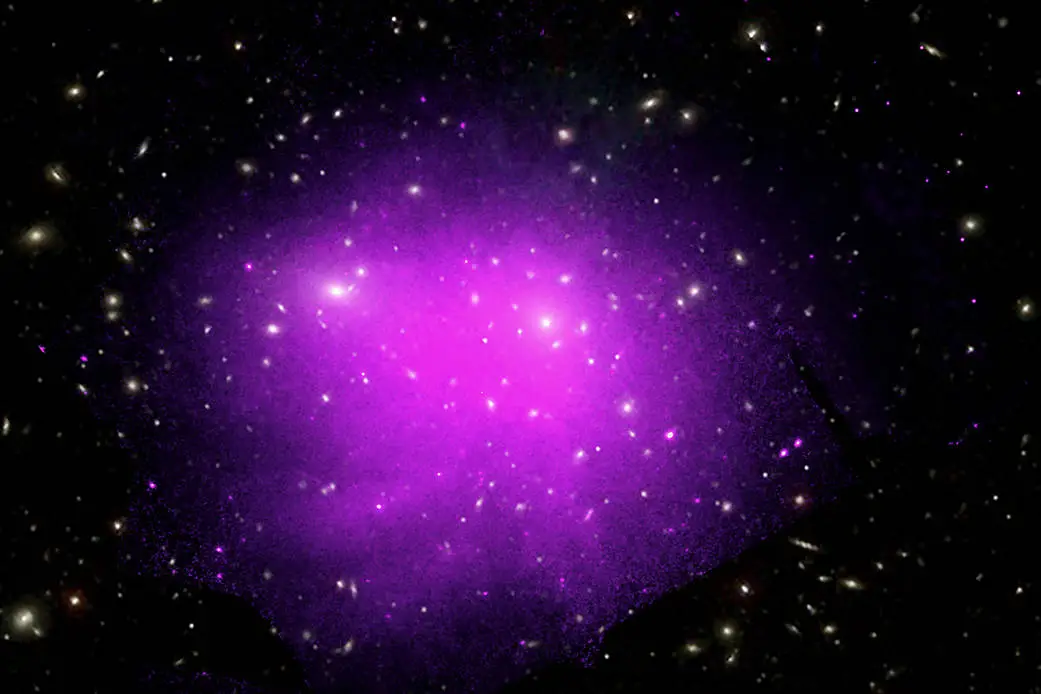
Image Caption: Deep dataset of the Coma galaxy cluster. Image Credit: X-ray: NASA/CXC/Univ. of Chicago, I. Zhuravleva et al, Optical: SDSS
It wasn’t until the 60s and 70s that Zwicky’s observations were further expanded upon, by a young astronomer named Vera Rubin. Using observations made about the orbits of stars within a single galaxy, Rubin was able to conclude that on average, galaxies contain about 10 times as much mass compared to what visible stars account for.
Initially, many astronomers were skeptical of these findings, but eventually, the evidence proved to be so overwhelming that the existence of dark matter became widely accepted in the space-science community.
So, What Is Dark Matter?!
The chilling answer is that we don’t really know.
You see, studying dark matter is a bit of a difficult task due to the fact that it is completely invisible and undetectable with the use of modern-day astronomical instruments.
Adler astronomer Dr. Geza Gyuk has done extensive research regarding dark matter. In the mid-90s, Dr. Gyuk and a group of scientists studied a specific subset of celestial objects called MACHOs.
MACHOs, also known as Massive Compact Halo Objects, are dense objects that emit little to no light. Some examples include: black holes, neutron stars, and brown dwarfs.
Since MACHOs are simultaneously dense and not very luminous, it was originally thought that they could be a serious contender for dark matter.
However, the research conducted by a group of scientists, including Dr. Gyuk, revealed with confidence that MACHOs were most likely not the cause of dark matter. There simply weren’t enough of these objects to account for the huge amounts of unknown mass throughout the universe.
But fret not, although Dr. Gyuk’s MACHOs research didn’t solve the mystery of dark matter, it did help narrow down some of the potential answers. To quote Dr. Gyuk: “If you can rule out the possibilities with an experiment, that’s a good thing too.”
What Is Dark Matter Made Of?
So, if MACHOs aren’t behind dark matter…then what could it be? Well, most scientists believe that dark matter is composed of some sort of “exotic particle” that doesn’t interact with baryonic matter. Baryonic matter is the matter that you and I interact with on a daily basis—the kind of matter that is composed of protons, neutrons, and electrons.
According to Dr. Gyuk, good candidates for dark matter can be found in Weakly Interacting Massive Particles (WIMPs) or axions.
WIMPs and axions are hypothetical particles, consistent with particle physics. They are both types of “Cold Dark Matter.” Cold dark matter is any dark matter that moves very slowly compared to the speed of light.
These proposed WIMPs and axions barely interact with baryonic matter, and they also don’t emit light, making them exceedingly difficult to observe in experiments.
There’s More To Discover With Dark Matter
Nearly a century after Fritz Zwicky’s observations, the search for cold dark matter and WIMPs continues to rage on.
Whether through observing dark matter’s effects on celestial objects or trying to capture a non-baryonic particle in the lab—scientists are as eager as ever in their attempts to solve this mystery.
When asked about the future of dark matter research, Dr. Gyuk had this to say: “We’re hoping that the next generation of experiments will start to detect these non-baryonic particles…If they don’t…people will start to get worried.”
With this in mind, as you celebrate all things spooky—swamp monsters, aliens, and the like—don’t forget about the spookiest beast of them all…dark matter.
Astronomy Conversations At The Adler
Talk to astronomers about cutting-edge research and experience awe-inspiring visualizations! Astronomy Conversations hosts Adler researchers and visiting scientists to engage museum guests about their research, and is complemented by space and science visuals.
This is your chance to interact with practicing scientists to ask them anything from the mysteries of the universe, like dark matter or brand new space news.
Adler Skywatch: October 2025
Header Image: A bright full Moon with an orange hue appears surrounded by tree branches in the night sky.
Both the full and the new Moons are highlights of the night sky this month! Here’s what you can see in the sky in October 2025.
Is October’s Full Moon A Super Moon?
This month’s full Moon falls on October 6, making it—by only a day or two—the closest full Moon to last month’s autumnal equinox. By definition, this makes it the harvest Moon for 2025! Usually the harvest Moon takes place in September, but every few years, it falls in October. The last time the harvest Moon occurred in October was in 2020.
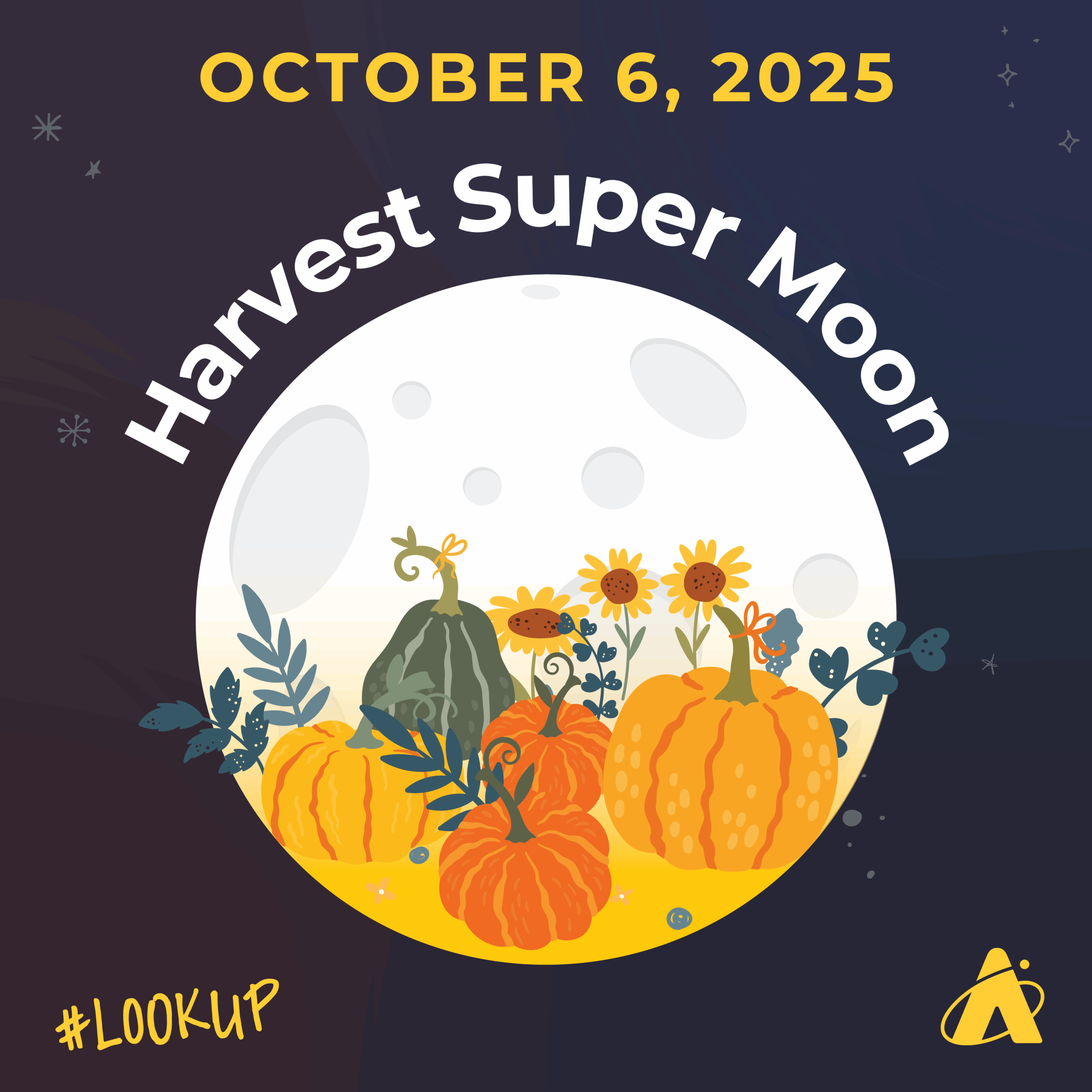
Not only is this month’s full Moon the harvest Moon, some also consider it to be a super Moon. While there is no consistent definition of this term, it usually refers to a full (or new) Moon that occurs near the Moon’s perigee—its closest point to Earth in its elliptical orbit. It also means that the full Moon may appear slightly bigger and brighter than usual.
The average distance from Earth to the Moon is just under 239,000 miles, while this month’s full Moon will get less than 225,000 miles from Earth at its closest point. The next two full Moons will also be super Moons—and will get even closer to Earth than this month’s super harvest Moon.
Dark Skies For The Orionid Meteor Shower
This month’s new Moon is also a night-sky highlight, not due to being able to see it, but due to everything else you can see because of the new Moon’s darkness.
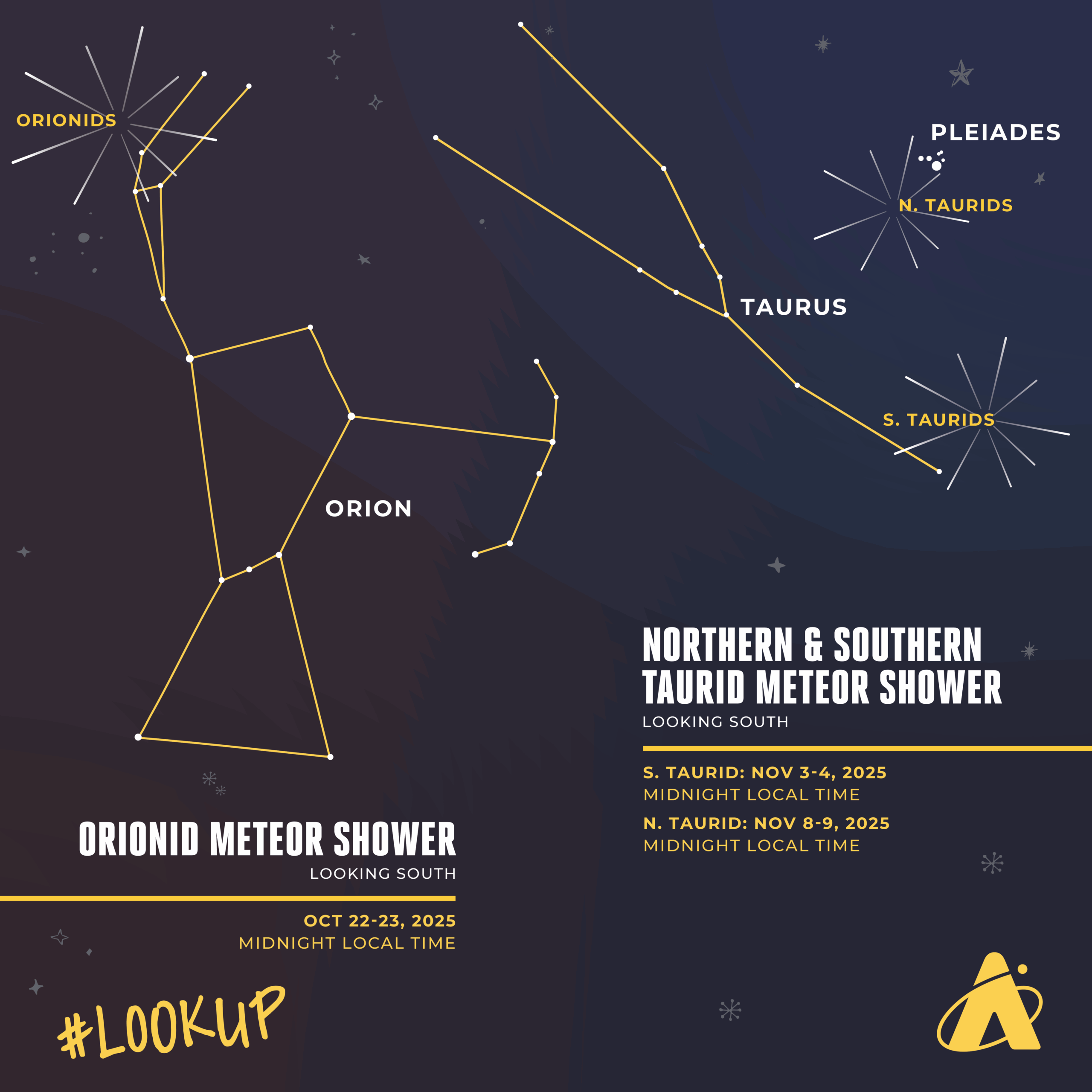
Whenever one of the year’s major meteor showers occurs, it’s always recommended to find the darkest sky possible for observing meteors. This month features the Orionid meteor shower, which is caused by debris from Comet Halley. The shower is expected to peak the night of October 22 into the morning of October 23, with a maximum of a dozen or so meteors per hour under very dark, very clear skies. This year, Orionid viewers get a viewing-boost due to the new Moon not lighting-up the night sky!
Planets Visible in October
How To See Saturn
In terms of planetary action this month, Saturn appears in the sky nearly all night long. Early in the month, it’s near the eastern horizon just as the Sun is setting in the west. Late in the month, Saturn is about 15 degrees high in the east-southeast sky at sunset. It gets about 45 degrees high in the southern skies an hour or two before midnight Central Daylight time. The night of October 5 through the early-morning darkness of October 6, it appears less than five degrees below a nearly full Moon. Saturn sets a little south of west before 6:00 am early in the month, and before 4:00 am later in the month.
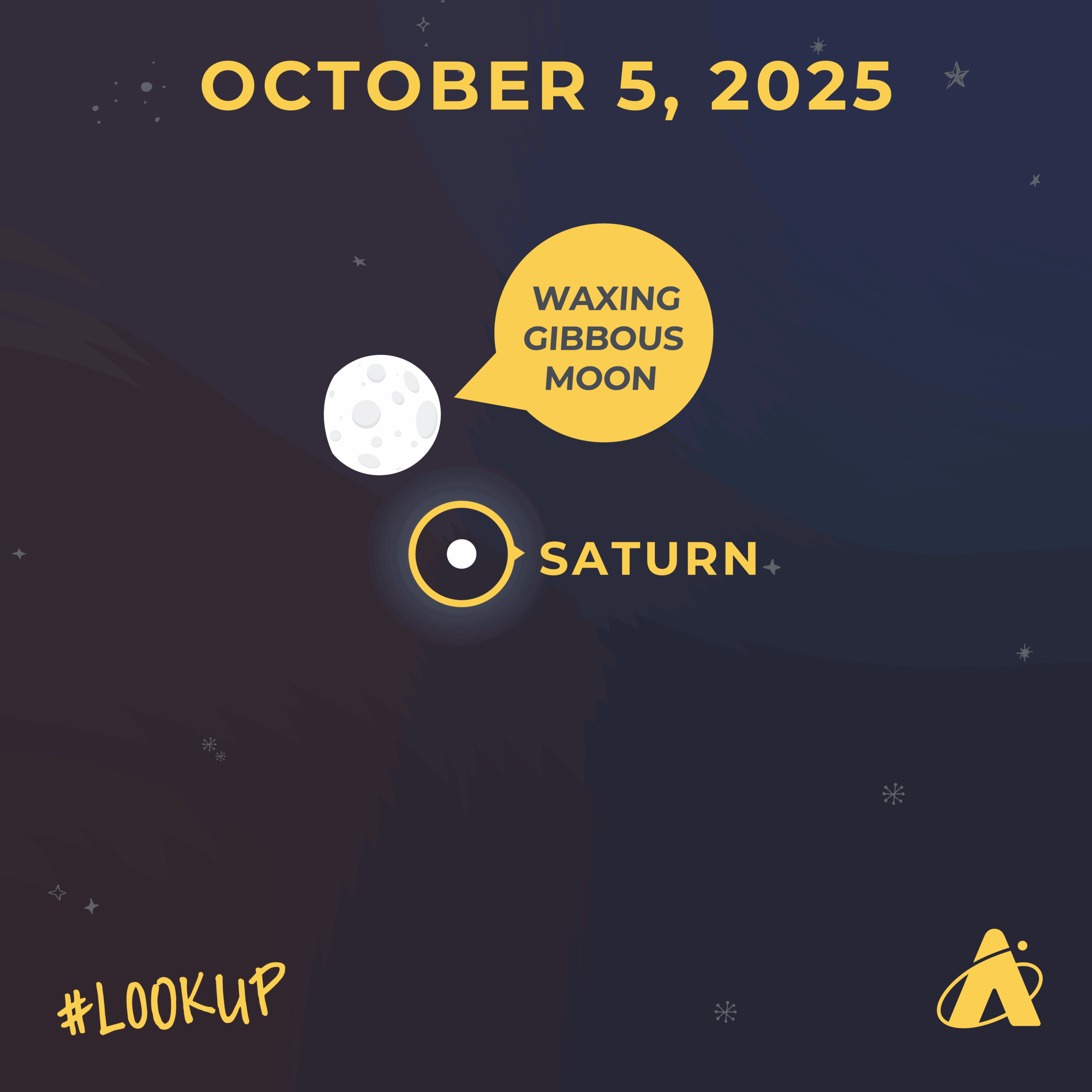
How To See Jupiter
The planet Jupiter rises in the east-northeast shortly after midnight at the start of the month. It rises a little earlier each night, so that by month’s end it rises around 10:30 pm. At brighter than minus-two magnitude, and getting brighter each night, it outshines the bright stars around it. Around midnight on October 14, Jupiter appears about five degrees to the right of the dark side of a last quarter Moon.
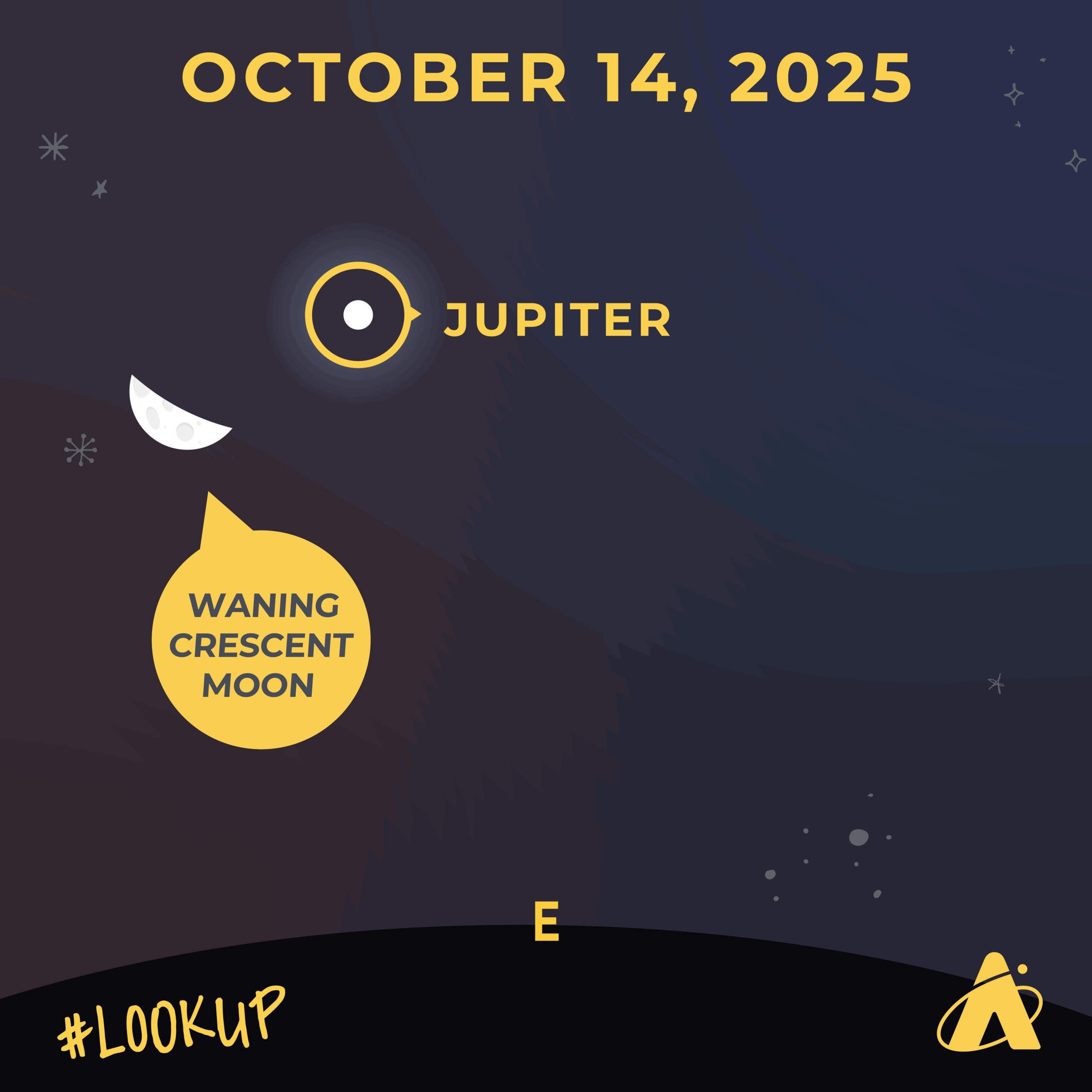
Early in the month, it gets more than 60 degrees high in the southeastern sky before it starts to fade in morning twilight. In the second half of the month, the Sun doesn’t rise until around or after 7:00 am; so Jupiter can be seen later into the morning darkness. It reaches roughly 70 degrees in the southern sky before fading high in the southwest.
How To See Venus
The brightest planet, Venus, rises a little north of east around 5:00 am at the start of the month. About halfway through the month, it rises nearly due-east around 5:30 am and by the end of the month it rises a little south of east around 6:00 am.
It shines just slightly below a bright minus-four magnitude all month long. The morning of October 19, it’s less than five degrees to the left of a very slim waning crescent Moon. The Sun rises about two hours after Venus at the start of the month, and about 90 minutes after Venus rises by the end of the month, so there’s a small window of time to see the planet before the Sun makes viewing difficult.
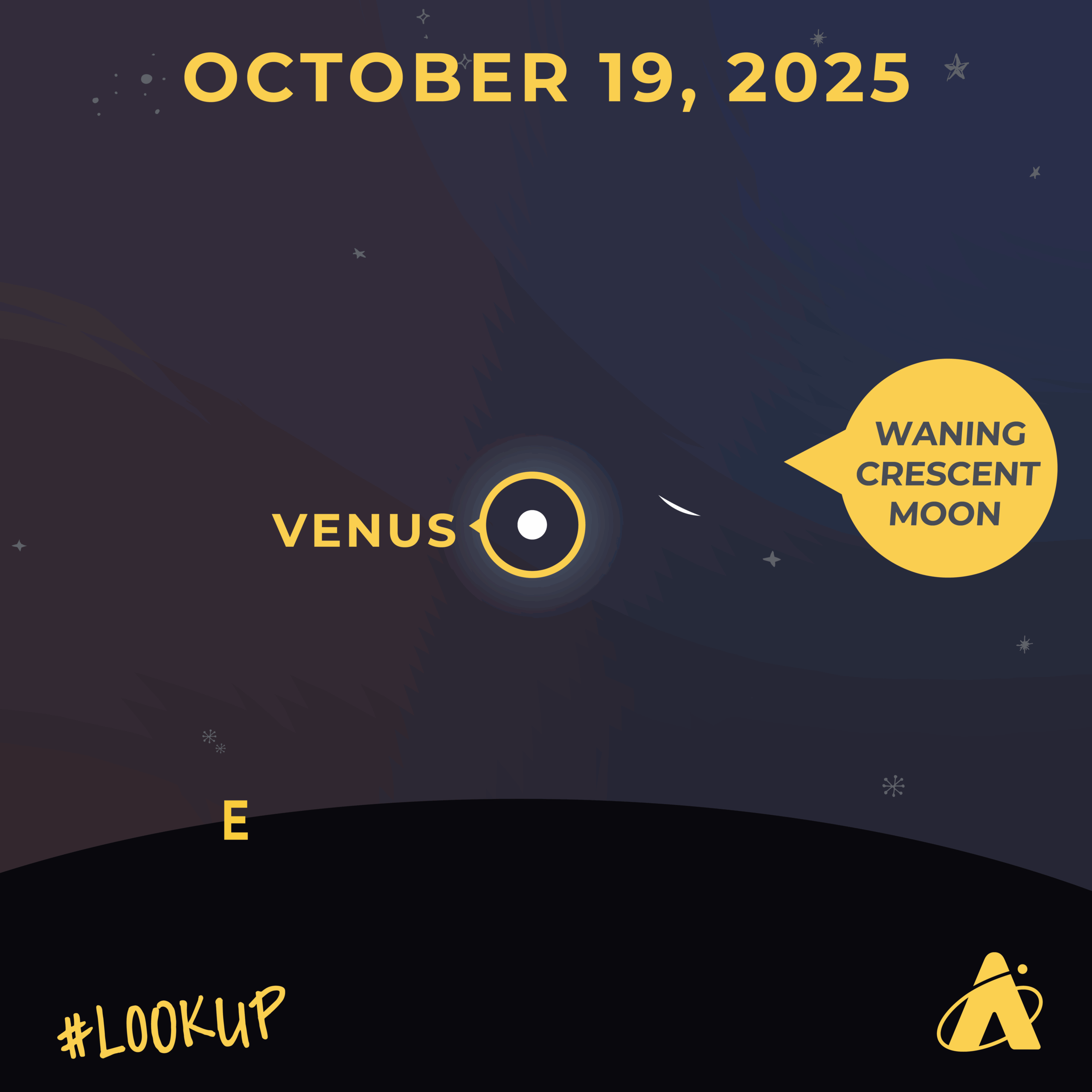
Can I See Mars and Mercury?
The planets Mars and Mercury appear very close to the setting Sun in October, making them very difficult, if not impossible, to see.
October 2025 Moon Phases
Full Moon: October 6
Last Quarter Moon: October 13
New Moon: October 21
First Quarter Moon: October 29
Please note: these descriptions are for the Chicago area, using Central time.
Subscribe To Skywatch Wednesday This October
Tour the sky with the Adler Planetarium’s Theaters Manager, Nick, in Skywatch Wednesday. Nick uses cutting edge visualizations, NASA images, and astrophotography to show you what you can see in the night sky throughout the year.
Check out Nick’s latest episode to guide you through the autumn night sky. Learn how to see famous fall constellations like Pegasus, Cassiopeia, Cepheus, Andromeda, and Perseus. Nick also explains how to see the Pleiades star cluster, zodiac constellations Sagittarius and Taurus, Saturn with and without its rings, and Moon conjunctions!
Learn From Our Astronomy Educators
Watch recaps of Sky Observers Hangout livestreams this October! Learn how to observe upcoming cosmic happenings, enhance your astrophotography skills, and see celestial objects through a telescope virtually with our astronomy educators.
In the latest episode, Michelle and Hunter tell you everything you need to know about solar maximum—a period of heightened solar activity that we are currently in! Get a live view of the Sun through our telescopes and learn all about how the Sun’s activity and dynamic weather affects us here on Earth.
Understanding Chicagohenge
Header Image: Chicagohenge as seen from West Adams Street. Image Credit: Tim Hara
Update: This blog was originally published in 2020 and written by Bianca Anderson. It is revised each year with updated dates of Chicagohenge and the equinoxes.
Greetings fellow Chicagoans! It is almost that time of year when nature and architecture harmoniously come together to create the phenomenon known as Chicagohenge.
For those who don’t know, Chicagohenge occurs twice a year and happens when the Sun directly lines up with Chicago’s east-west facing streets.
Not only is this event a beautiful sight to behold, but the science behind it is quite interesting—let’s dive in!

About Chicago’s Grid
To fully understand Chicagohenge, you have to be aware of the two main factors that cause it: Chicago’s grid plan and equinoxes.
Let’s first touch on the grid plan that Chicago was built on. A grid plan is when the streets of a city run at right angles to each other forming a (you guessed it) grid!

The present-day Chicago grid system can be attributed to the Public Land Survey System—a surveying method created in 1785 that was used to divide land for selling and settling. But this style of city design has been around since the dawn of civilization and can be found in the ruins of ancient Rome, Greece, and others.
The benefits of a grid plan are numerous. They help make cities more walkable, navigable, and adaptable. Plus they end up resulting in cool astronomical and architectural events (like Chicagohenge)!
Fun fact: Chicago’s streets line up almost perfectly with the cardinal east and west directions on a compass. This in turn, sets up the perfect stage for Chicagohenge to take place.
Chicagohenge is named after the famous prehistoric monument, Stonehenge. A sculpture similar to this familiar giant stone monument, America’s Courtyard, can be found on the right side of the Adler Planetarium when approaching the building. The installation can be used to mark the Sun’s passage through the seasonal equinoxes and solstices.

However, did you know that Stonehenge isn’t actually a henge after all?
@adlerplanet #Chicagohenge is actually a little sus…#Stonehenge #LearnOnTikTok #SpaceScience #Science #Chicago
Now that we’ve got the basics of Chicago’s grid mapped out—let’s dive into the role that equinoxes play in the makings of Chicagohenge.
Equinoxes 101
As the Earth orbits around the Sun, it is also spinning along its tilted axis.
Since the Earth’s axis is tilted, sunlight is not always distributed equally. At any given point, one-half of the Earth is tilted towards the Sun more than the other. As the Earth orbits around the Sun, the part that was tilting away from the Sun begins to be the part that is facing towards the Sun. This is why we have seasons!
There are two times during the year when the Earth’s equator receives most of the sunlight. When this happens, our planet’s Northern and Southern Hemispheres experience equal amounts of day and night—hence the term equinox.
There are two equinoxes each year, one that marks the start of spring (Spring Equinox) and one that marks the end of summer (Autumn Equinox).
During an equinox, the Sun rises and sets directly to the east and west.
Thanks to Chicago’s perfectly lined grid system, the bi-annual equinoxes mark a time when the Sun rises and sets directly in line with Chicago’s east and west streets, causing Chicagohenge!
When is Chicagohenge 2025?
In 2025, Chicagohenge dates fall around March 20–23, 2025 and September 19–22, 2025. The best time to view Chicagohenge is when looking due east or due west around sunset or sunrise on these day(s) leading up to or after the equinoxes.
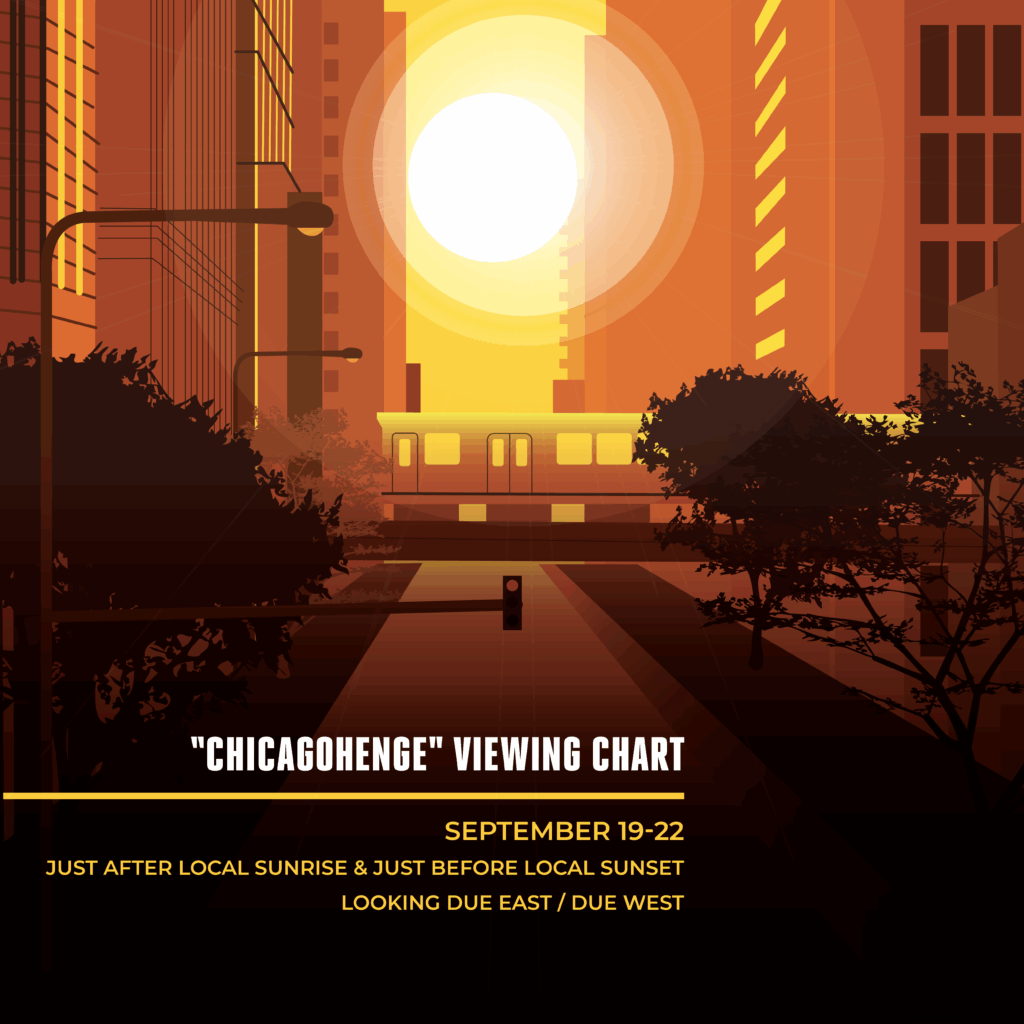
Friday, September 19, 2025: Sunrise at 6:35 am and sunset at 6:52 pm
Saturday, September 20, 2025: Sunrise at 6:36 am and sunset at 6:50 pm
Sunday, September 21, 2025: Sunrise at 6:37 am and sunset at 6:48 pm
Monday, September 22, 2025: Sunrise at 6:38 am and sunset at 6:47 pm
Best Spots to View Chicagohenge
Finding a place to spot Chicagohenge is a no-brainer! Simply find one of Chicago’s east–west facing streets, pick a spot 5-10 minutes before sunrise or sunset, and enjoy the view.

If you do decide to check it out, snap a pic and tag @adlerplanet and #Chicagohenge on your favorite social media channels! It’s sure to be a sight to behold.
Learn From Our Astronomy Educators
In a previous Sky Observers Hangout episode, our astronomy educators show you how to observe equinox sunrise and sunset alignments in your area and how to photograph Chicagohenge!
Watch the full Chicagohenge episode and subscribe to our YouTube channel to stay up to date on upcoming cosmic happenings and even see celestial objects through a telescope virtually.
Adler Skywatch: September 2025
Header Image: The Sun sets over downtown Chicago during Chicagohenge.
The Sun sets a little earlier each day until almost the end of the year. It reaches a seasonal checkpoint in the sky, bringing with it the beginning of fall. Here’s what you can see in the sky in September, 2025.
The Autumnal Equinox
The autumnal, or vernal, equinox in the Northern Hemisphere occurs on September 22, at 1:19 pm Central Daylight time. It marks the first day of fall and is one of the two points in the year when the Sun appears to cross the celestial equator. Imagine projecting Earth’s equator out into space, dividing the sky into northern and southern halves—that dividing circle is the celestial equator.
On the equinox, the Sun rises roughly due east and sets roughly due west, and the length of daylight hours and nighttime hours are about the same. After the autumnal equinox, the length of nighttime gradually increases each day, until the winter solstice on December 21.
Chicagohenge 2025
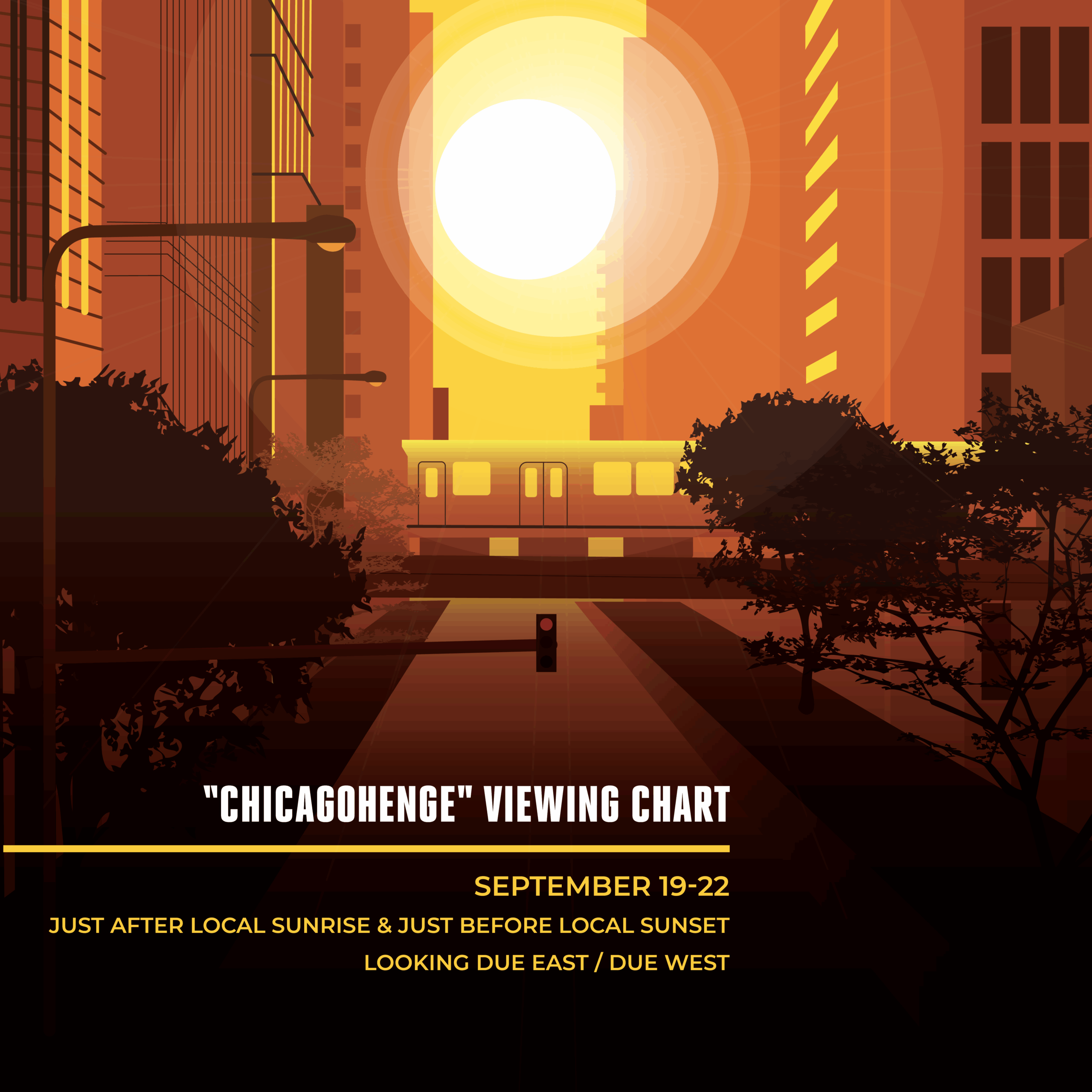
On clear days just before, during, and after the autumnal equinox, see if you can spot the famous architectural phenomenon: Chicagohenge. Looking down the east-west-running roads in Chicago and the suburbs, the rising and setting Sun gets framed by buildings and other structures on either side, creating a beautiful sight.
How To See Venus and Jupiter
Like last month, the planets Venus and Jupiter appear not far from each other, low in the east shortly before sunrise. Bright Jupiter rises first, in the east-northeast around 3:00 am at the start of the month, and at about 1:30 am by month’s end. To the left of Jupiter are the bright “twin stars” Pollux and Castor, in the constellation Gemini. Pollux is the brighter of the two stars, but Jupiter is brighter than either star. The morning of September 16, a very slim crescent Moon appears between the planet and the two stars.
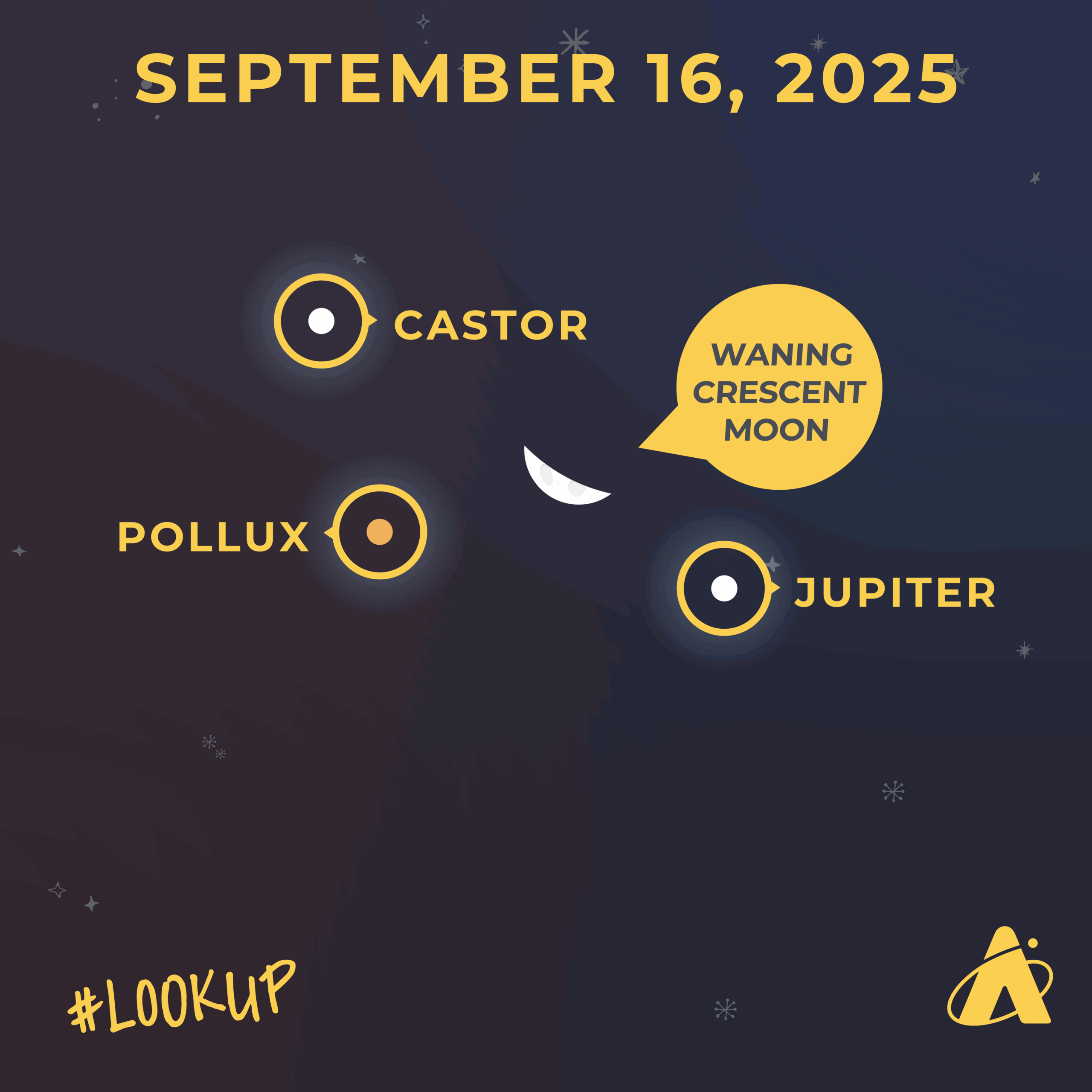
In the east-northeast, the dazzling Venus rises a little after 4:30 am at the start of the month and around 5:45 am by month’s end. The two planets are about 20 degrees apart on September 1 and move farther apart until they’re about 50 degrees apart on September 30.
The morning of September 19, a nearly new Moon is in conjunction with Venus. The planet will be barely a quarter of a degree from the lower “horn” of the skinny crescent Moon. You may also see a star about a half degree to the lower right of Venus. That star is Regulus, the brightest star in the constellation Leo.
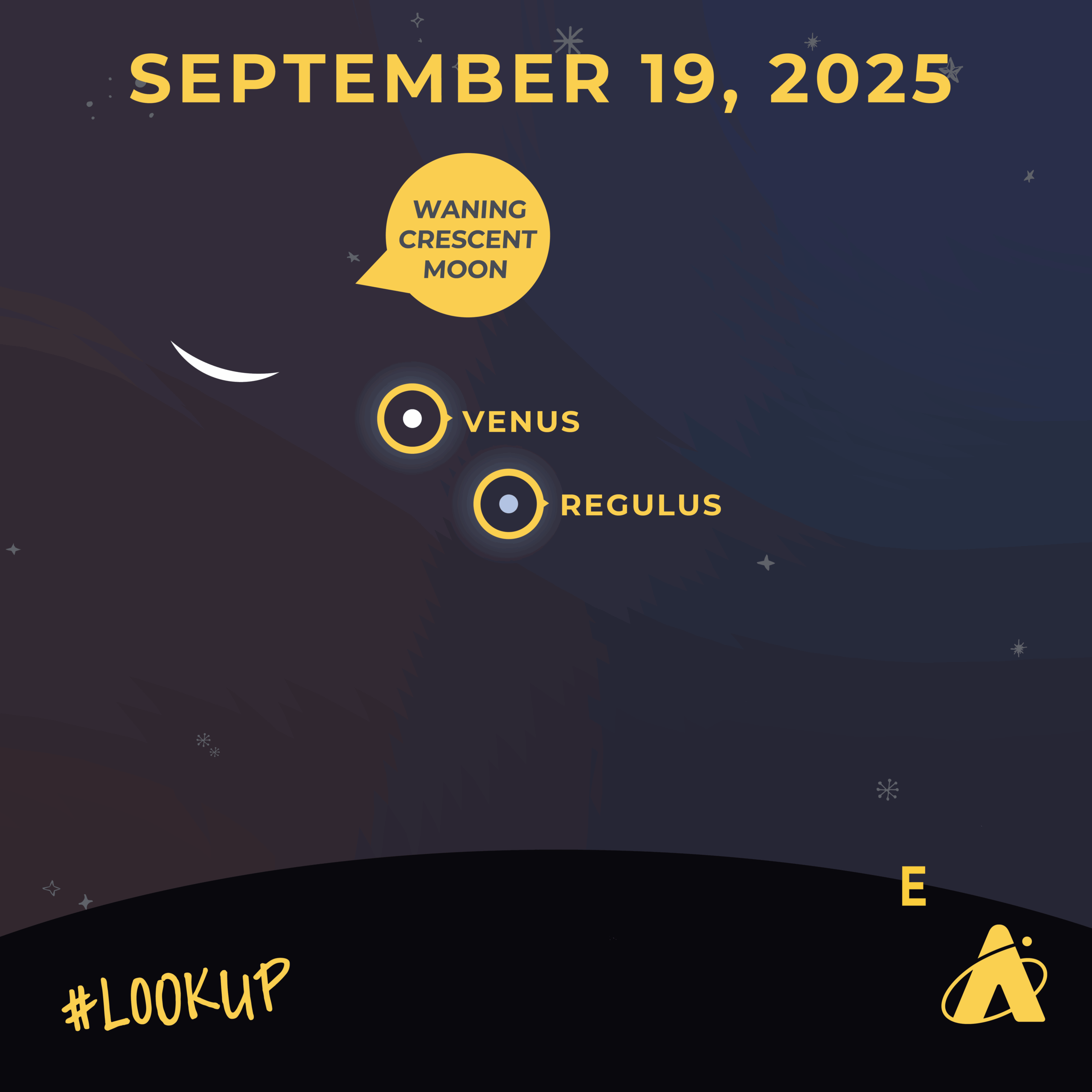
Winter Stars Make An Appearance
Before sunrise, you may also notice that there are numerous fairly bright stars to the right of Jupiter and Venus, in roughly the same quarter of the sky. Over the next three months, those stars will highlight the winter night sky, including the night’s brightest star, Sirius, in the constellation Canis Major. It shines at nearly -1.5 magnitude.
How To See Saturn
If you don’t want to rise before dawn to see a planet, Saturn appears low in the east by about 9:30 pm at the start of the month, and by about 7:30 pm by the end of the month. It remains brighter than first-magnitude all month long. Saturn is at its nearest approach to Earth for the year this month, and on September 21, Saturn reaches its opposition. When a planet is in opposition, it means that the Earth is directly between it and the Sun.
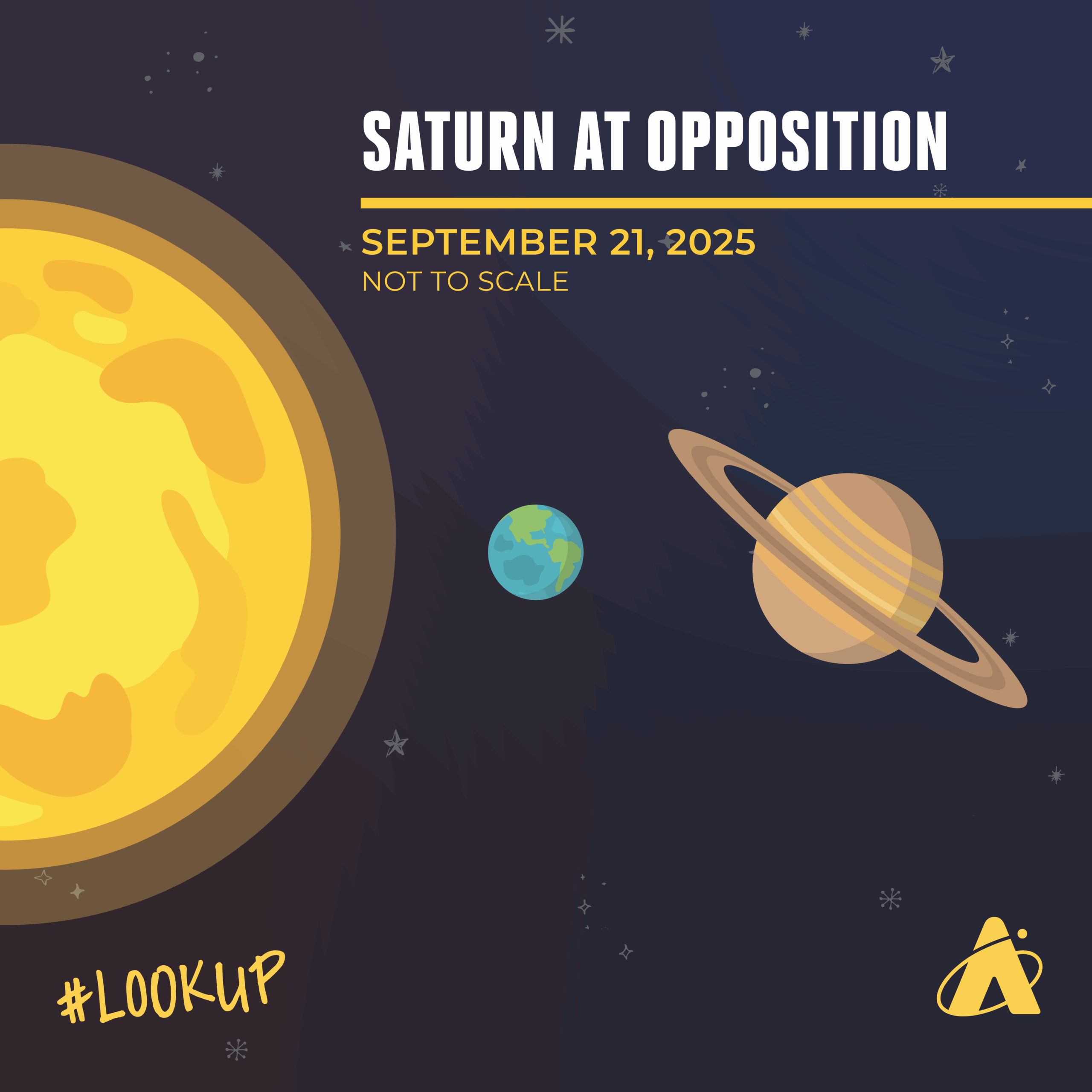
Around midnight, Saturn gets about halfway up in the southern skies at its highest point. The night of September 7 through the morning of September 8, Saturn appears near a large Moon, barely a day past a full Moon.
Early in the month, it fades away low in the west-southwest as morning twilight brightens the sky. But in the latter half of the month, if you have a clear view to the western horizon, you may be able to see Saturn setting before the sky becomes too bright.
Moon Phases
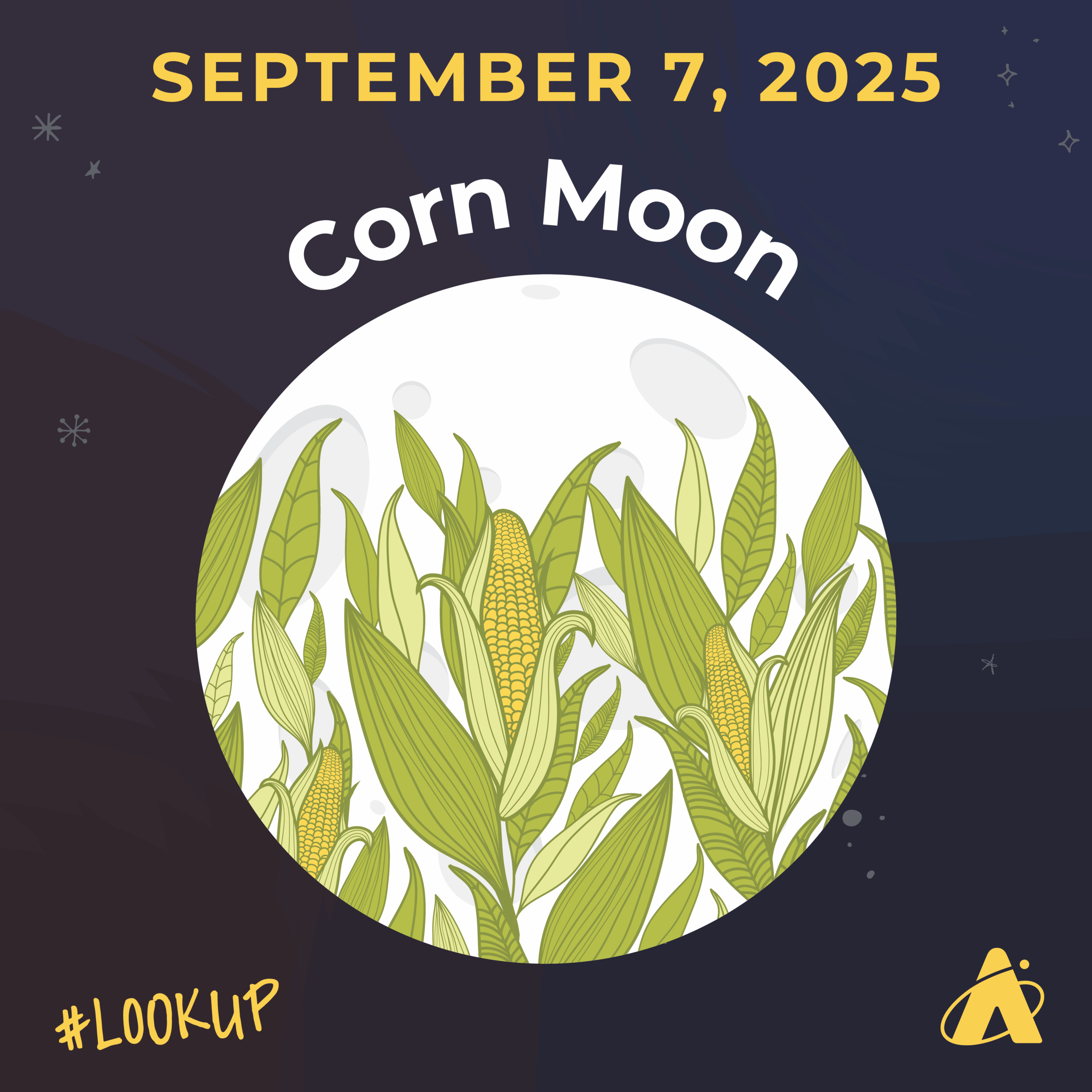
There is a total lunar eclipse occurring this month, the night of the full corn Moon on September 7, however, it won’t be visible from the continental United States.
Full Moon: September 7
Last Quarter Moon: September 14
New Moon: September 21
First Quarter Moon: September 29
Please note: these descriptions are for the Chicago area, using Central time.
Subscribe To Skywatch Wednesday This September
Tour the sky with the Adler Planetarium’s Theaters Manager, Nick, in Skywatch Wednesday. Nick uses cutting edge visualizations, NASA images, and astrophotography to show you what you can see in the night sky throughout the year.
Check out Nick’s latest episode, learn how to see the summer triangle and the constellations that make it up. Plus, see zodiac constellations, Scorpius and Sagittarius, along with several Moon and planet conjunctions, and the Milky Way this summer!
Learn From Our Astronomy Educators
Watch recaps of Sky Observers Hangout livestreams this September! Learn how to observe upcoming cosmic happenings, enhance your astrophotography skills, and see celestial objects through a telescope virtually with our astronomy educators.
In the latest episode, Michelle and Hunter tell you everything you need to know about solar maximum—a period of heightened solar activity that we are currently in! Get a live view of the Sun through our telescopes and learn all about how the Sun’s activity and dynamic weather affects us here on Earth.




